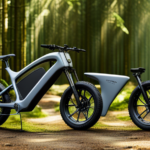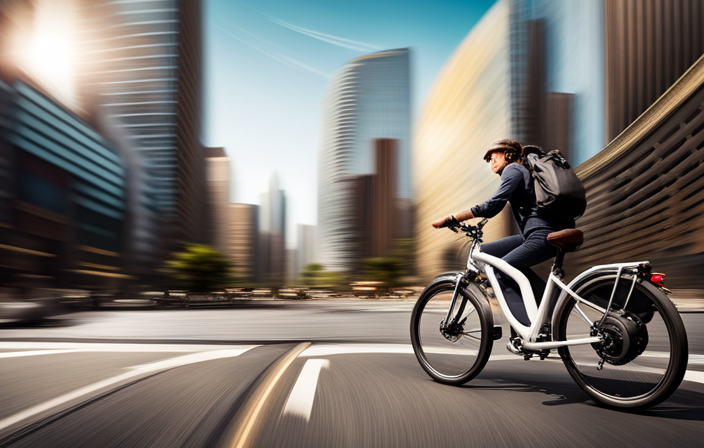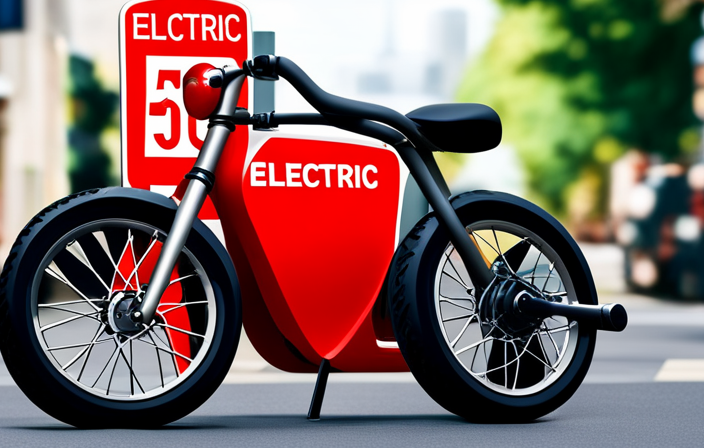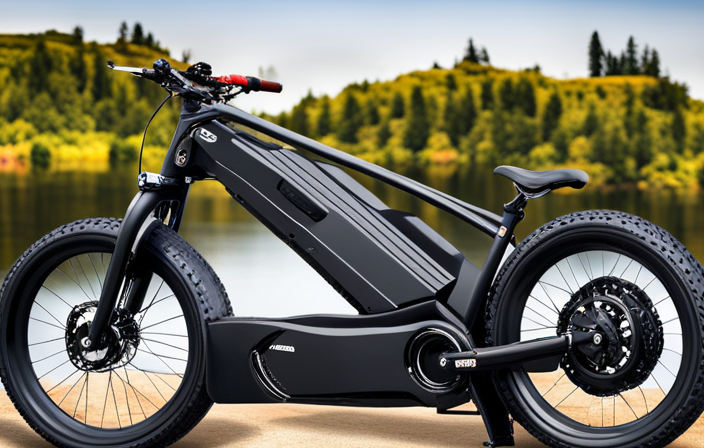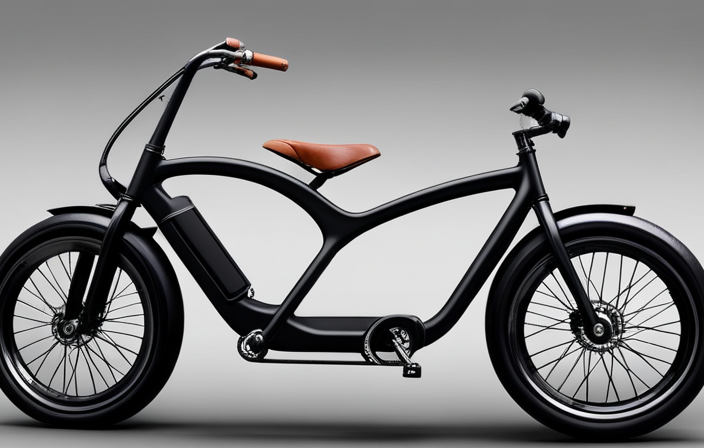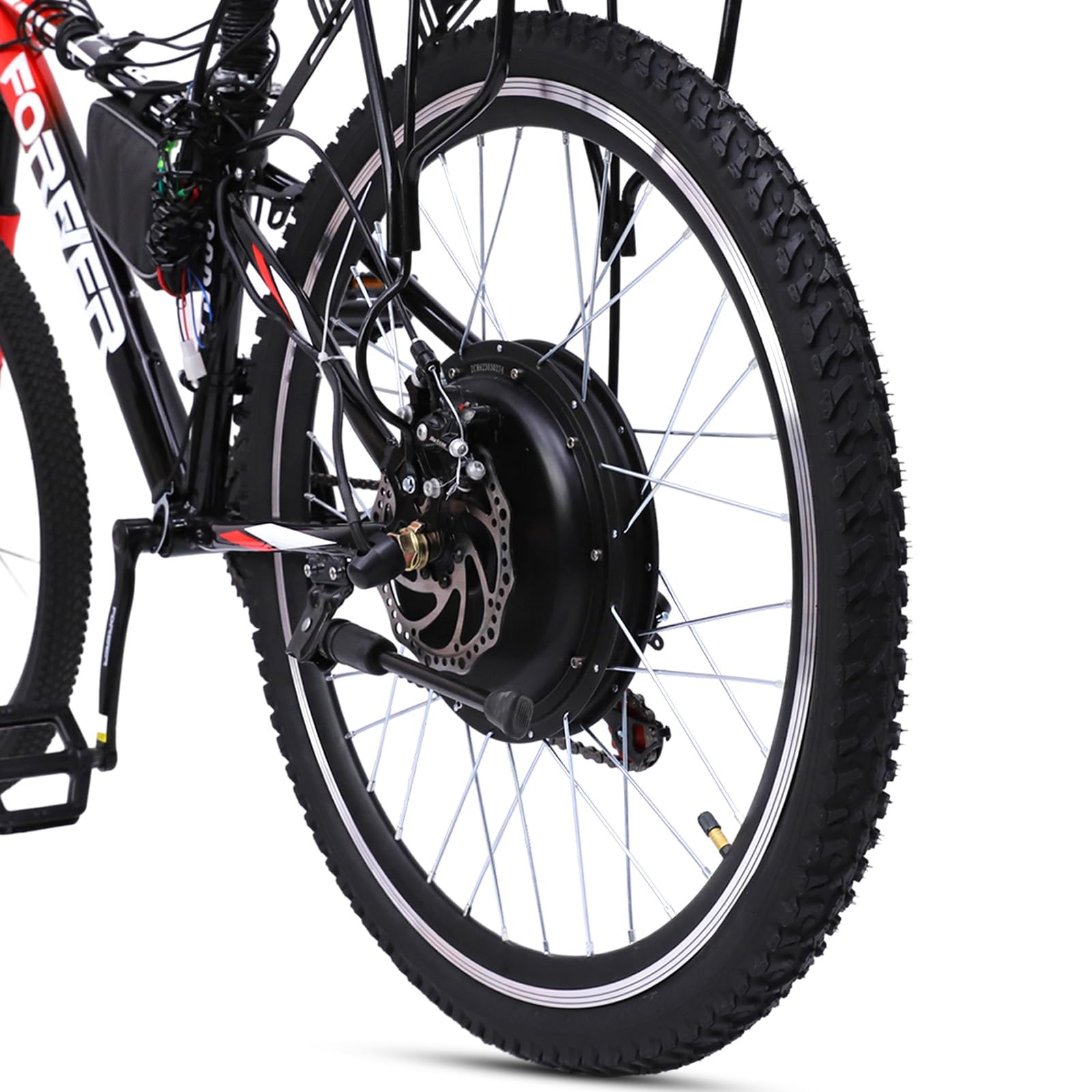Mountain Bike
Why Don’t Mountain Bikes Have Mudguards? Find Out!

Did you know that despite the messy conditions mountain bikers often find themselves in, many mountain bikes do not come equipped with mudguards? It’s surprising to think that a simple accessory designed to keep mud and dirt off the rider’s face is missing from most mountain bikes.
While mountain biking in wet and muddy terrain can be exhilarating, it also comes with its challenges. In this article, we’ll explore the importance of mudguards in winter and wet conditions, what to look for when choosing a mudguard, different mudguard lengths and their benefits, mudguard compatibility with different bike forks and wheels, attachment methods for mudguards, testing and comparison of mudguards, types of mudguards and their benefits, installing mudguards on different bicycles, reasons to use mudguards, and even how you can enter to win a set of mudguards. So let’s dive in and discover why mudguards are a must-have accessory for enthusiastic mountain bikers.
Key Takeaways:
- Mudguards are often absent from mountain bikes despite their importance in keeping mud and dirt off the rider’s face.
- Mudguards are crucial for maintaining visibility and enjoying a more comfortable ride in winter or wet conditions.
- When choosing a mudguard, consider its features, installation method, and material.
- Mudguard length affects the level of protection from mud and water splashes.
- Mudguards can be compatible with various bike forks and wheel sizes, but the attachment method may vary.
The Importance of Mudguards in Winter and Wet Conditions
Mountain biking in winter or wet weather conditions can be a thrilling experience, but it also comes with its challenges. Riding in muddy and slippery trails can improve our riding skills and make even easy trails more exciting. However, wearing waterproof riding gear and layers of clothing to stay dry and warm is essential.
The most important thing is to keep mud out of the rider’s eyes by using mudguards and proper eyewear.
Mudguards play a crucial role in maintaining visibility and making the ride more enjoyable, especially in wet and muddy conditions. They prevent mud and water from splashing onto our face, ensuring a clear view of the trail ahead. Without mudguards, riding in winter or wet conditions can be uncomfortable and potentially dangerous, as mud and water can impair our vision and lead to accidents.
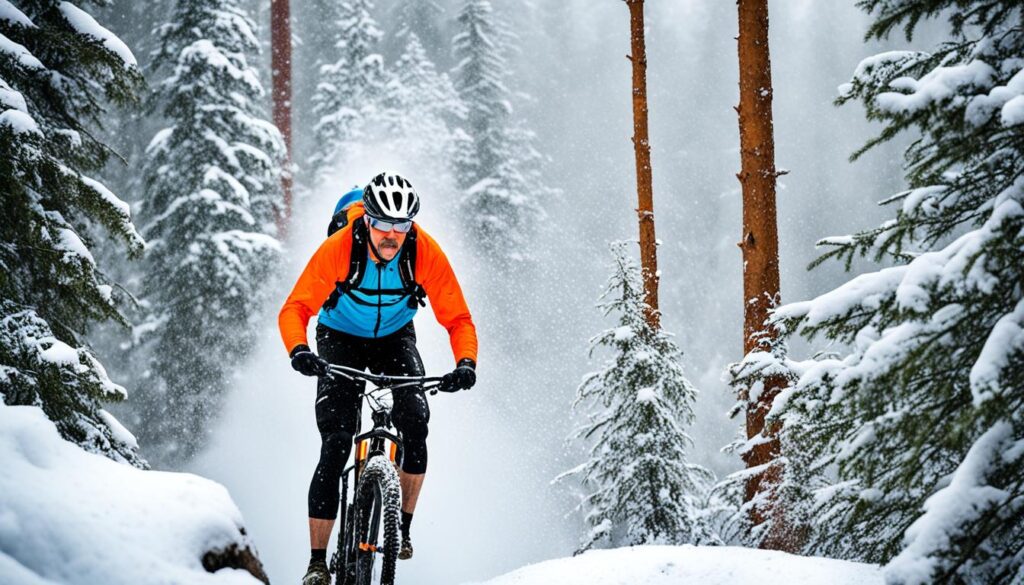
The Benefits of Using Mudguards in Winter and Wet Weather:
- Improved visibility: Mudguards help to keep mud and water off our face and out of our eyes, ensuring clear vision.
- Enhanced riding experience: By preventing mud splashes, mudguards make the ride more enjoyable, allowing us to fully focus on the trail.
- Reduced cleaning and maintenance: Mudguards protect both the rider and the bike from excessive dirt and grime, minimizing the need for frequent cleaning and maintenance.
- Increased safety: With clear visibility, we can better anticipate obstacles and navigate the trail, reducing the risk of accidents.
Therefore, when gearing up for winter or wet weather rides, don’t forget to equip your mountain bike with reliable mudguards. They are essential accessories that will enhance your riding experience and keep you safe and comfortable on the trails.
What to Look for in a Mudguard
When it comes to choosing a mudguard for your mountain bike, there are a few key features to consider. The primary purpose of a mudguard is to keep mud off your face and prevent any annoying rattling noises while riding. But what other factors should you take into account? Let’s take a closer look:
- Easy Installation: Look for a mudguard that offers easy and quick installation. The last thing you want is to spend too much time fiddling with complicated attachments when you could be out on the trails enjoying your ride.
- Fork Seal Protection: A good mudguard should also offer protection for your fork seals. It should shield them from mud and water, helping to prolong their lifespan and ensure smooth suspension performance.
- No Paint Scuffing: The mudguard should be designed in a way that it doesn’t scuff the paint on the lower legs of your bike. This will help to keep your bike looking fresh and prevent any unnecessary damage.
- Durable Material: The material of the mudguard is an essential factor to consider. It should be flexible enough to withstand crashes and impacts from debris, but also stiff enough to stay in place while riding. Recycled plastic is a popular choice for mudguards due to its simplicity and durability.
By considering these key features, you can find a mudguard that meets your needs and enhances your mountain biking experience. Now let’s dive deeper into the different lengths of mudguards and the benefits they offer.
Different Mudguard Lengths and Their Benefits
When it comes to choosing a mudguard for your mountain bike, mudguard length is an important factor to consider. The length of the mudguard determines the level of protection it provides against mud and water splashes. Let’s explore the benefits of different mudguard lengths and their compatibility with various trails.
The Benefits of Longer Mudguards
Longer mudguards offer superior protection by extending further down from the front wheel, effectively minimizing the amount of mud and water that splashes onto the rider. These mudguards create a barrier, keeping the rider and their bike cleaner and drier even in the muddiest of conditions. They are particularly beneficial for riders who frequently tackle wet and muddy trails.
Not only do longer mudguards protect the rider, but they also shield the bike’s drivetrain and suspension components from debris, reducing the chances of damage and the need for frequent cleaning and maintenance. They provide an added layer of defense, extending the lifespan of your bike’s vital parts.
The Advantages of Shorter Mudguards
Shorter mudguards, on the other hand, offer a more streamlined and minimalist approach. These mudguards are commonly seen on the trail as they are less obtrusive and can be left on the bike year-round. They are popular among riders who prioritize trail compatibility and prefer a sleeker look.
In bike parks where chairlifts are frequently used, shorter mudguards are preferred to avoid any interference or compatibility issues. They provide adequate protection from mud and water splashes without getting in the way of the rider or the bike’s functionality.
Choosing the Right Mudguard Length
Ultimately, the choice between longer and shorter mudguards depends on your personal preferences and riding conditions. Longer mudguards offer the highest level of protection, especially in muddy and wet terrains. However, shorter mudguards still provide significant protection and are more practical for everyday trail riding and bike park adventures.
To help you make an informed decision, here’s a table comparing the benefits of longer and shorter mudguards:
| Mudguard Length | Protection Level | Trail Compatibility | Visual Appearance |
|---|---|---|---|
| Longer Mudguards | Superior | Suitable for wet and muddy conditions | Slightly bulkier |
| Shorter Mudguards | Adequate | Compatible with most trails, especially bike parks | Sleek and minimalist |
Remember, even opting for a shorter mudguard is better than riding without any mudguard at all. It’s essential to protect yourself and your bike from the mud and grime that comes with off-road adventures.
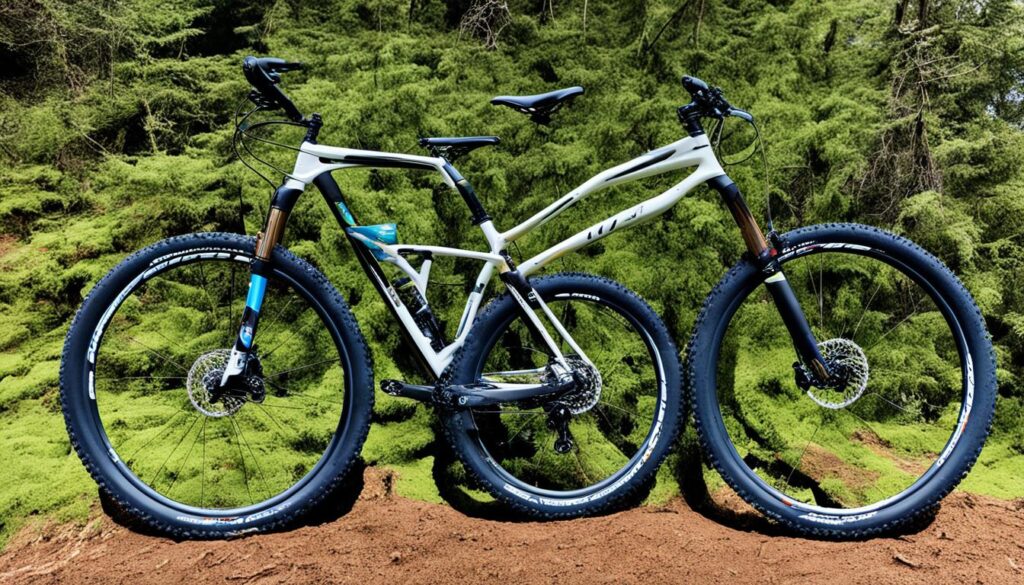
Now that you understand the benefits of different mudguard lengths, you can choose the one that best suits your riding style, the conditions you ride in, and the level of protection you desire.
Mudguard Compatibility with Different Bike Forks and Wheels
When it comes to mudguards, compatibility with different bike forks and wheels is an important consideration. Let’s take a closer look at the two main types of mudguards, bolt-on and strap-on, and how they relate to different fork types and wheel sizes.
Bolt-On Mudguards
Bolt-on mudguards are specifically designed for certain fork models and require a fork with threads in the back of the bridge. These mudguards provide a secure and stable attachment, ensuring they stay in place even during rough rides. However, their compatibility is limited to the fork models they are designed for.
Strap-On Mudguards
Strap-on mudguards offer greater compatibility as they can be attached to most common suspension forks on the market. They are available in two attachment options: cable ties or Velcro straps. These versatile mudguards can accommodate various fork types and wheel sizes, making them a popular choice among riders.
It’s important to note that unique fork designs or upside-down forks may limit the compatibility of certain mudguard models. Riders with these fork types should consult with their local bike shop or manufacturer for recommendations on compatible mudguards.
In terms of wheel sizes, mudguards are generally compatible with a range of sizes, including 26-inch, 27.5-inch, and 29-inch wheels. However, some mudguards may have specific size ranges, so it’s essential to check the product specifications before making a purchase.
Now that we’ve explored mudguard compatibility with different bike forks and wheels, let’s dive into the various methods of attaching mudguards in the next section.

Attachment Methods for Mudguards
When it comes to attaching mudguards to your bike, you have two main options: strap-on or bolt-on methods. Each method has its own advantages and considerations, making it important to choose the right attachment method for your specific needs.
Strap-On Mudguards
Strap-on mudguards offer convenience and versatility, making them a popular choice among riders. These mudguards can be further divided into two types of attachments: cable tie and Velcro strap.
- Cable Tie Attachments: Cable ties provide a secure and reliable attachment for strap-on mudguards. They are easy to install and remove, making them a convenient option for riders who frequently switch between muddy and dry conditions. However, cable ties can produce more waste if the mudguard needs to be frequently removed and reinstalled.
- Velcro Strap Attachments: Velcro straps offer a tool-free and fast attachment process for strap-on mudguards. They provide a secure fit and can be easily adjusted to accommodate different bike frames and wheel sizes. Velcro straps are a popular choice among riders who value simplicity and ease of use.
Bolt-On Mudguards
Bolt-on mudguards provide a more permanent and secure attachment method. These mudguards are bolted onto the bike frame or fork, offering a cleaner and more integrated look. However, bolt-on mudguards may have limited compatibility with certain bike models, requiring specific fork designs or threaded holes for installation.
| Attachment Method | Pros | Cons |
|---|---|---|
| Strap-On (Cable Tie) | – Easy to install and remove – Versatile attachment – Suitable for frequent use |
– May produce more waste – May rub against the fork and damage paint |
| Strap-On (Velcro Strap) | – Tool-free and fast attachment – Adjustable fit – Simple and convenient |
– Not suitable for all bike models |
| Bolt-On | – Provides a cleaner and integrated look – Secure attachment – Permanent installation |
– Limited compatibility – May require specific fork designs or threaded holes |
When choosing an attachment method for your mudguards, consider factors such as ease of use, compatibility with your bike, and the level of permanence you desire. Whether you opt for the convenience of strap-on mudguards or the clean look of bolt-on mudguards, the important thing is to ensure your mudguards are properly attached and provide the protection you need.
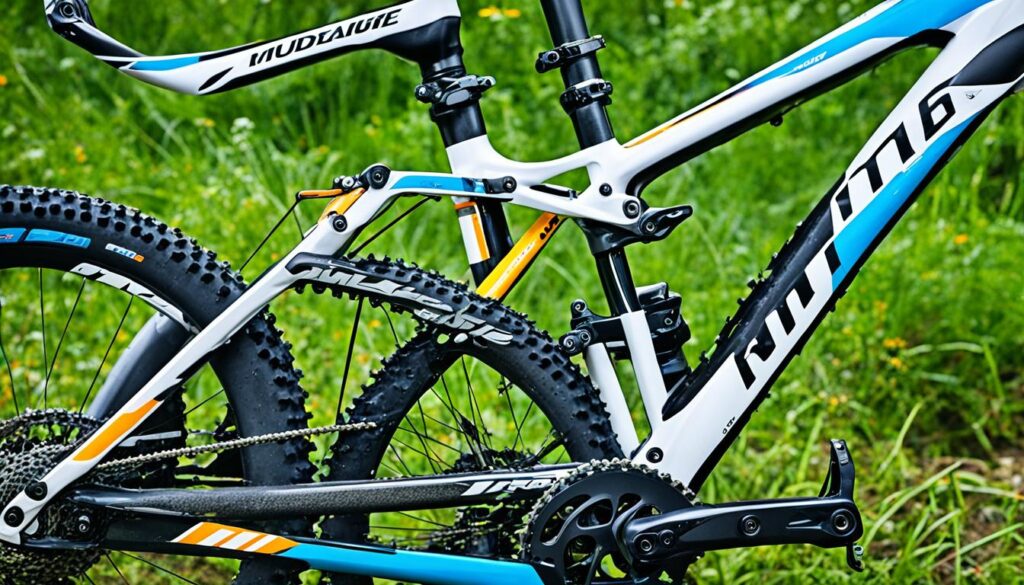
Testing and Comparison of Mudguards
To ensure the selection of the best mudguards, we conducted extensive testing and comparison on various models. Our goal was to evaluate mudguards’ performance in different trail conditions and weather scenarios, with a strong focus on their protective effect and ease of installation. The results of our field tests highlighted the importance of mudguards in safeguarding riders and their bikes from mud and dirt.
Test Methodology
We selected a diverse range of mudguards from leading brands and subjected them to rigorous testing on different trails. These trails included muddy terrains, wet tracks, and challenging off-road conditions. Each mudguard underwent field tests to assess its protective capabilities and compatibility with various mountain bikes.
Evaluation Criteria
Our evaluation criteria consisted of several factors to determine the best mudguards for protection and performance:
- Protective Effect: We examined how well the mudguards performed in deflecting mud and dirt from the rider’s face and torso. The effectiveness of the mudguards in reducing splashes and maintaining visibility was crucial in this evaluation.
- Ease of Installation: We considered the ease and convenience of installing the mudguards on different mountain bike models. Factors such as the attachment method and compatibility with various fork designs were taken into account.
- Performance on Muddy Trails: We analyzed how the mudguards performed on muddy trails, focusing on their ability to minimize mud accumulation, prevent clogging, and reduce the need for frequent cleaning during rides.
Field Test Results
| Mudguard | Protective Effect | Ease of Installation | Performance on Muddy Trails |
|---|---|---|---|
| Brand A Mudguard | Excellent | Easy | Outstanding |
| Brand B Mudguard | Good | Moderate | Satisfactory |
| Brand C Mudguard | Very Good | Difficult | Adequate |
Based on our comprehensive testing and evaluation, we found that Brand A mudguards displayed excellent protective effects, were easy to install, and performed exceptionally well on muddy trails. Brand B mudguards were deemed good, offering moderate protection and ease of installation. Brand C mudguards provided very good protection, but their installation was more challenging, affecting their overall performance.
The extensive mudguard testing reaffirmed our belief in the significant role mudguards play in ensuring rider safety and preserving the bike’s longevity. By choosing the right mudguard based on our evaluation criteria, mountain biking enthusiasts can enjoy their rides without the nuisance of mud and dirt splashes.

Types of Mudguards and Their Benefits
When it comes to mudguards, there are different types available, each offering its own set of benefits. Whether you’re looking for minimalistic protection or maximum coverage, there’s a mudguard option that suits your needs.
Ass-Savers
Ass-savers are a popular choice for riders who prefer a minimalist approach. These compact mudguards are designed to be easily attached and provide basic protection for the rider’s rear. They are lightweight, portable, and can be quickly installed when needed. Ass-savers are an excellent option for riders who want a convenient solution without the need for full fenders.
Detachable Rear Mudguards
If you’re looking for more protection than what ass-savers offer but still want to avoid the bulk of full fenders, detachable rear mudguards are a great choice. These mudguards provide extended coverage, keeping your backside and the rear wheel protected from water and mud splashes. They are easy to install and remove, making them a versatile option for riders who want the flexibility of using mudguards when necessary.
Full Fenders
For riders seeking the highest level of protection, full fenders are the way to go. These mudguards provide complete coverage for both the front and rear wheels, ensuring that you stay dry and clean even in the muddiest conditions. Full fenders are available in plastic or metal options, allowing you to choose based on your preference for durability or weight. These mudguards are ideal for commuters, touring cyclists, and anyone who wants maximum shielding from water, dirt, and debris.
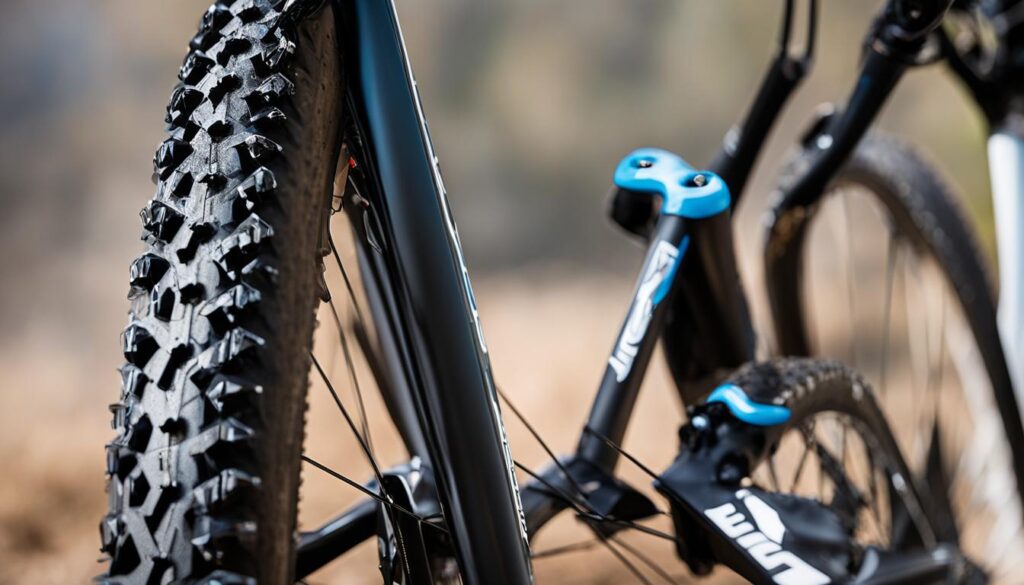
No matter the type of mudguard you choose, they all serve the common purpose of keeping you and your bike cleaner and protected from muddy and wet conditions. Consider your desired level of protection and compatibility with your bike when selecting the right mudguard for your needs.
Installing Mudguards on Different Bicycles
Installing mudguards on your bicycle is a practical way to keep yourself and your bike clean and dry in wet and muddy conditions. However, the installation method may vary depending on the type of bike you have. Let’s explore the different installation methods for mudguards based on bike compatibility:
Clip-On Mudguards
If you want a quick and easy solution, clip-on mudguards are the way to go. These mudguards can be easily mounted on any bike without the need for additional mounting points. Simply clip them onto the frame or fork, and you’re good to go. Clip-on mudguards are particularly popular among urban, hybrid, and gravel bikes, as they offer a convenient and versatile option for mudguard installation.
Full Fenders
If you’re looking for maximum protection from mud and water splashes, full fenders are a great choice. However, installing full fenders may require additional mounting points or eyelets on your bike’s frame and fork. These mounting points allow for a more secure attachment, ensuring that the mudguards stay in place even on rough terrain. Full fenders are commonly found on city bikes and touring bikes, as they provide comprehensive coverage and protection against the elements.
When installing full fenders, it’s important to consider the clearance between the tire and the frame or fork. Make sure there is enough space to accommodate the mudguards without causing any interference or rubbing against the tires. Proper clearance will prevent any potential accidents or damage to your bike.
| Bike Type | Recommended Mudguard Type |
|---|---|
| Gravel Bike | Clip-On Mudguards |
| Hybrid Bike | Clip-On Mudguards |
| Urban Bike | Clip-On Mudguards |
| Road Bike | Full Fenders (May require additional mounting points) |
| Mountain Bike | Clip-On Mudguards (May require customization or alternative attachment methods) |
Remember, mudguards are an essential accessory for a more enjoyable and comfortable ride in wet conditions. Consider your bike’s compatibility and choose the appropriate mudguard type for optimal protection against mud, water, and dirt. Safeguard yourself and your bike while exploring the great outdoors!
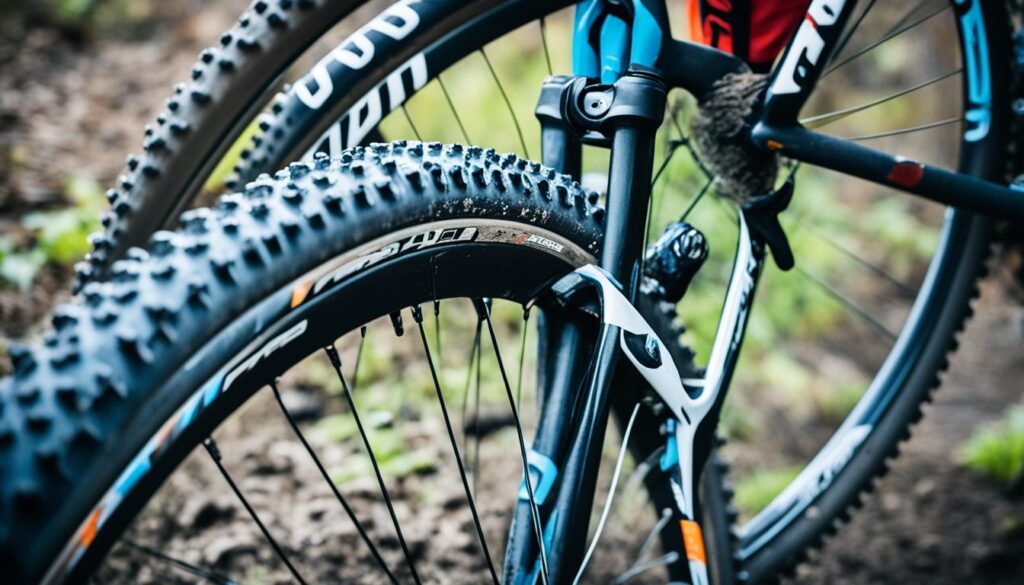
Reasons to Use Mudguards
Using mudguards provides several benefits for both the rider and the bike. Let’s explore these advantages below:
1. Protection from Water and Dirt
Mudguards are designed to shield the rider from splashes of water and dirt, ensuring that their clothing and body parts remain clean and dry. This is particularly important when riding in wet and muddy conditions, as it helps to maintain comfort throughout the ride.
2. Bike Protection
In addition to protecting the rider, mudguards also play a crucial role in safeguarding the bike itself. By preventing dirt accumulation, mudguards help to reduce the need for frequent cleaning and maintenance. This can save time and effort, allowing riders to focus more on enjoying their cycling adventures.
3. Enhanced Group Riding Experience
Mudguards are particularly beneficial when cycling in groups. They help to prevent splashing fellow riders, creating a more pleasant and enjoyable riding experience for everyone. By minimizing the amount of mud and water being thrown up into the air, mudguards contribute to a more harmonious and cooperative group dynamics.
4. Improved Safety
Mudguards significantly contribute to rider safety by preventing mud splashes in the face. This not only improves visibility but also prevents blindsiding of cyclists riding behind. By reducing the risk of accidents and promoting a safer riding environment, mudguards are an essential accessory for any cyclist.
5. Motivation to Ride in Wet Conditions
One of the often-overlooked benefits of mudguards is the motivation they provide to ride in wet conditions. With mudguards in place, riders feel more protected and less deterred by the elements. Mudguards add an element of fun and adventure to wet rides, empowering cyclists to embrace the challenges of inclement weather.
As you can see, mudguards offer a range of benefits, from protection and safety to motivation and enjoyment. Incorporating mudguards into your cycling setup is a small investment that yields significant returns in terms of comfort, cleanliness, and overall riding experience.

Enter to Win a Set of Mudguards
Achieve ultimate mud protection and enhance your riding experience with the SKS Bluemels Stingray mudguards, designed to keep you clean and dry in any weather conditions. We are excited to announce a mudguard giveaway, giving you the chance to win a set of these high-quality mudguards for your bike.
Here’s how to enter:
- Read this article and gain valuable insights into the importance of mudguards.
- Leave a comment below, sharing why you believe mudguards are essential for your biking adventures.
By participating in our free prize draw, you could be the lucky winner chosen to receive a brand new set of SKS Bluemels Stingray mudguards. Don’t miss out on this opportunity to upgrade your bike and enjoy mud-free rides.

“I never realized how much I needed mudguards until I got caught in a heavy downpour during a mountain biking trip. The SKS Bluemels Stingray mudguards have completely transformed my riding experience by keeping me clean and providing excellent protection from mud and water splashes.” – Jessica, avid mountain biker
“Installing mudguards on my bike has been a game-changer. Not only do they save me from getting drenched in muddy water, but they also keep my bike cleaner for longer. I highly recommend the SKS Bluemels Stingray mudguards for their durability and superior performance.” – Mike, passionate cyclist
Hurry and enter our mudguard giveaway now to stand a chance of winning the SKS Bluemels Stingray mudguards. Upgrade your biking adventures with enhanced protection and ultimate mud-free rides.
Conclusion
In conclusion, mudguards are of utmost importance for mountain bikers, providing crucial protection against the elements in wet and muddy conditions. While not all mountain bikes come equipped with mudguards, it is essential to recognize their benefits and prioritize their usage for an enjoyable and safe riding experience.
Mudguards shield riders from the splashes of mud and dirt, ensuring they stay clean and dry while tackling challenging terrains. Additionally, they prevent mud from obstructing the rider’s vision, promoting better visibility and reducing the risk of accidents. Moreover, mudguards play a vital role in protecting the bike itself, minimizing dirt accumulation and minimizing the need for extensive cleaning and maintenance.
When selecting a mudguard, it is essential to consider the compatibility with your bike and the desired level of protection. Whether you opt for strap-on or bolt-on mudguards, choose a model that suits your bike’s specific fork and wheel sizes. By investing in a reliable and appropriate mudguard, you can make the most of your mountain biking adventures, confidently navigating through muddy trails while staying clean, dry, and safe.
FAQ
Why don’t mountain bikes have mudguards?
What is the importance of mudguards in winter and wet conditions?
What factors should I consider when choosing a mudguard?
What are the benefits of different mudguard lengths?
Are all mudguards compatible with different bike forks and wheels?
What are the attachment methods for mudguards?
How were mudguards tested and compared?
What are the different types of mudguards and their benefits?
Can mudguards be installed on any bicycle?
What are the reasons to use mudguards?
How can I enter to win a set of mudguards?
Mountain Bike
Why Don’t Mountain Bikes Have Fenders? The Reason!
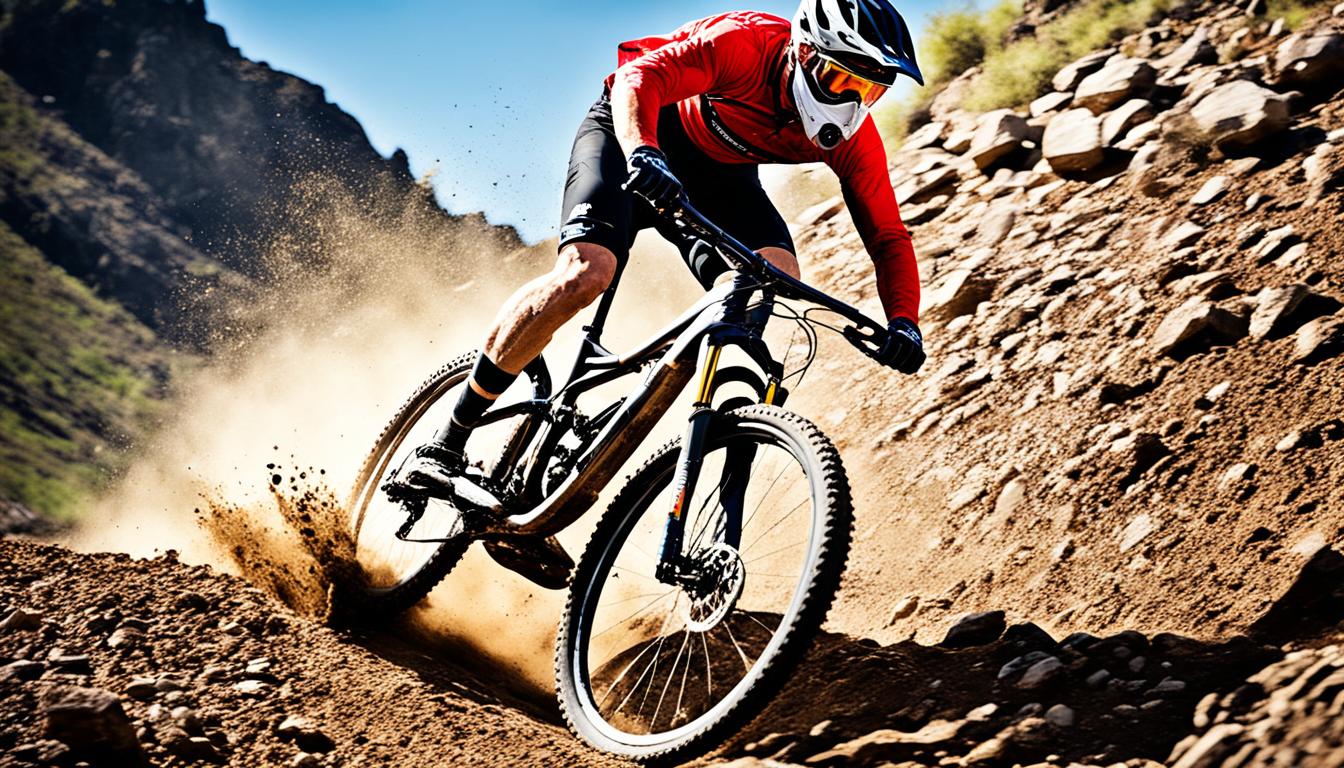
Did you know that despite their usefulness in wet conditions, fenders are not commonly seen on mountain bikes? It’s surprising considering how much dirt and debris can be kicked up during off-road rides. In this article, we will explore the practical reasons behind this design choice and what it means for mountain bikers.
Key Takeaways:
- Mountain bikes don’t typically come with fenders due to practical challenges in off-road conditions.
- The tendency for fenders to clog up with mud and debris limits their effectiveness in mountain biking.
- Fit and aesthetic concerns also play a role in why mountain bikes avoid fenders.
- In specialized mountain biking, riders prioritize performance over fender benefits.
- Alternative options like clip-on fenders or mud guards can provide some protection.
The Practicality of Fenders on Mountain Bikes
Fenders serve an important purpose in protecting cyclists from road spray and debris, particularly in wet conditions. However, when it comes to mountain biking, the practicality of using fenders is limited. There are specific challenges and considerations that make fenders less suitable for off-road adventures.
One of the major obstacles is the tendency for fenders to clog up with mud and debris in rugged off-road conditions. As mountain bikers navigate through muddy trails and encounter various types of terrain, the fenders can quickly become packed with dirt, rendering them ineffective. This accumulation of mud and debris not only affects the performance of the fenders but also adds extra weight to the bike, potentially impeding maneuverability.
Furthermore, the aerodynamics of fenders can impact speed and maneuverability, which are crucial factors in mountain biking. Off-road trails often require quick accelerations, sharp turns, and technical maneuvers, and any additional drag from fenders could hinder a rider’s ability to navigate these challenges effectively.
“We often find ourselves riding in wet and muddy conditions, and while fenders may seem like a logical choice for protection, they can quickly become more of a hindrance than a benefit. The constant clogging and added weight can significantly impact our performance on the trails.”
In the world of mountain biking, riders prioritize speed, agility, and responsiveness. While fenders offer protection for wet conditions, the practicality of using them on mountain bikes is overshadowed by their potential drawbacks.
Alternatives to Fenders
Fortunately, there are alternative options available for mountain bikers who still want some level of protection against road spray and debris. Some riders opt for clip-on fenders or shorter mud guards that provide limited coverage without the risk of excessive clogging. These alternative options strike a balance between protection and practicality, allowing riders to enjoy the benefits without compromising their performance.
Additionally, riders can choose to wear appropriate clothing, such as waterproof pants and jackets, to shield themselves from the elements. Accessories like mud flaps or ass savers can also provide some protection without affecting the bike’s aerodynamics.
The decision to use fenders on a mountain bike ultimately comes down to personal preference and the specific requirements of the ride. Some riders may prioritize the added protection and are willing to accept the trade-offs, while others may prioritize performance and choose to ride without fenders, even in wet conditions.

Concerns About Fit and Aesthetics
When it comes to mountain bikes, the absence of fenders can be attributed to concerns about fit and aesthetics. Unlike other types of bikes, mountain bikes are not designed with convenient attachment points or adequate clearance to fit fenders properly. This practical limitation makes it challenging to incorporate fenders into the overall design of mountain bikes.
Furthermore, there is a significant aesthetic consideration at play. Many riders view fenders as visually unappealing on a mountain bike. The sleek and rugged design of a mountain bike is often appreciated for its minimalist and aggressive look. Fenders, with their bulkier form and placement, can disrupt the aesthetics that riders value in their mountain biking equipment.

Addressing the Fit Challenge
Mountain bikes are built with specific parameters to enhance performance and maneuverability in off-road conditions. This means that there is limited space available to accommodate fenders without compromising the bike’s functionality. Manufacturers prioritize weight reduction, frame rigidity, and tire clearance, which may lead to a lack of dedicated fender attachment points.
While some mountain bikes may offer the option to attach fenders through aftermarket accessories, these add-ons can often be cumbersome and hinder the bike’s overall performance. Therefore, adding fenders to a mountain bike may not be a straightforward or practical solution.
Aesthetics and Individual Preference
Mountain biking is a sport that allows for individual expression and personalization. Riders often take pride in customizing their bikes to reflect their own unique style. The addition of fenders may disrupt the overall aesthetic and visual appeal that riders seek.
However, it’s important to note that aesthetics are highly subjective, and some riders may actually find fenders to complement their mountain bike’s appearance. Ultimately, the decision whether or not to use fenders is a personal one, driven by individual preferences and the desire to strike a balance between practicality and aesthetics.
| Concern | Solutions and Alternatives |
|---|---|
| Fit | – Look for mountain bikes with integrated fender mounts – Explore aftermarket options designed specifically for mountain bikes |
| Aesthetics | – Opt for shorter mud guards for minimal coverage – Choose fender designs that match the bike’s style and color scheme |
Specialized Use and Preference
Mountain biking is a thrilling activity that takes riders off-road and onto challenging terrains. When it comes to fenders, their necessity or practicality may vary in this specialized context. Many mountain bikers, particularly those engaged in intense and demanding riding activities, choose not to use fenders due to the specific demands of their riding style. These riders prioritize agility, speed, and maneuverability, making fenders less conducive to their preferences.
Moreover, personal preference also plays a significant role. Some riders simply prefer the feeling of riding without fenders, even in wet conditions. They enjoy the unobstructed connection to the trail, experiencing the full impact of every bump and obstacle. For them, the trade-off between the potential benefits of fenders and the pure mountain biking experience leans towards the latter.
In the world of mountain biking, it’s crucial to recognize the specialized use and individual preference that shape the decision of whether to use fenders. Embracing the essence of this thrilling activity, riders weigh the demands of their riding style and their personal inclinations to make a choice that best suits their needs.
| Specialized Use and Preference: | Advantages | Disadvantages |
|---|---|---|
| Specialized Use | 1. Enhanced agility and maneuverability 2. Unobstructed connection to the trail |
1. Reduced protection against road spray and debris 2. Potential discomfort in wet conditions |
| Preference | 1. Unencumbered riding experience 2. Pure connection with the trail |
1. Potentially compromised protection in wet conditions 2. Higher risk of clothing and bike maintenance |
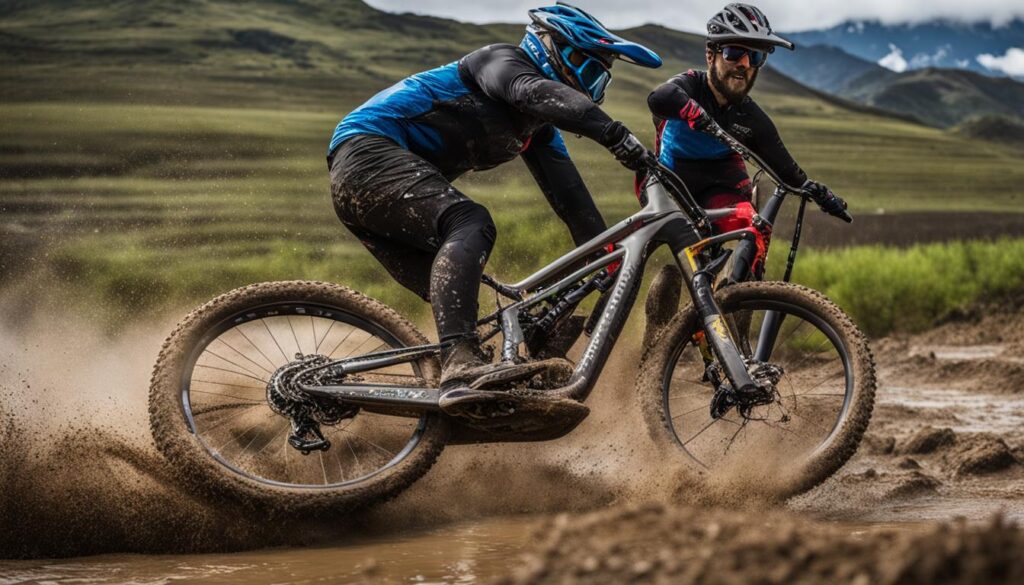 |
||
The Impact on Performance
When considering the inclusion of fenders on a mountain bike, one of the primary concerns is the potential impact on performance. As avid mountain bikers ourselves, we understand the importance of speed and agility in challenging terrains. The added weight and aerodynamic drag caused by fenders can have a noticeable effect on these crucial factors.
Mountain biking requires swift maneuverability and the ability to navigate obstacles with ease. Every additional ounce of weight can hinder acceleration and make it more challenging to maintain optimal speed. The extra resistance caused by fenders can also slow down the bike, affecting overall performance.
Fender Weight and Aerodynamic Drag
The weight of fenders varies depending on the material and design, ranging from a few ounces to several pounds. While it may not seem significant, even a slight increase in weight can impact the bike’s responsiveness, especially during climbs or when accelerating. Additionally, the aerodynamic shape of fenders can create drag, further impeding speed and agility.
It’s important to note that the impact on performance may not be the same for every rider. Experienced and professional mountain bikers, who rely on their skill and technique, may be more sensitive to any alterations in bike performance. On the other hand, recreational riders may not notice a substantial difference in their overall riding experience.
Assessing the Trade-off
Ultimately, the decision to use fenders on a mountain bike boils down to personal preference and prioritization. Some riders may prioritize the potential benefits of fenders, such as protection from road spray and debris, over the minimal impact on performance. For others, squeezing out every ounce of performance becomes a top priority, leading them to opt for a fenderless setup.
It’s important to consider your specific riding style, terrain conditions, and personal goals when deciding whether to incorporate fenders into your mountain biking setup. If you frequently ride in wet and muddy conditions, the added protection may outweigh the slight decrease in performance. However, if you primarily focus on speed and agility, you may choose to forego the use of fenders.
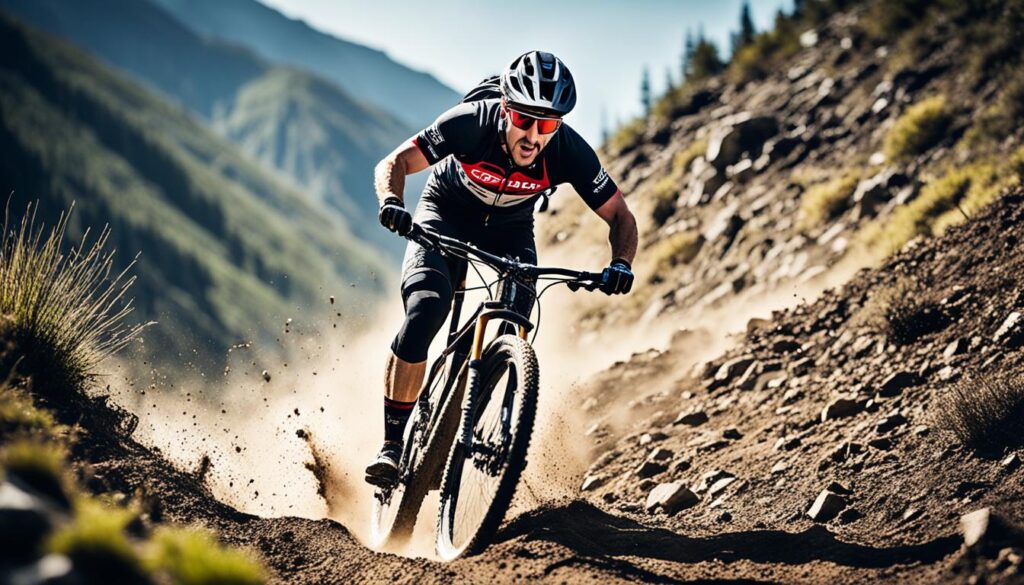
| Pros | Cons |
|---|---|
| Protection from road spray and debris | Increased weight |
| Improved visibility in wet conditions | Aerodynamic drag |
| Reduced bike maintenance | Potential impact on speed and agility |
Alternatives to Fenders
While mountain bikes might not come equipped with fenders, there are alternative options available for riders who still want protection against road spray and debris. Let’s explore some of these alternatives:
Clip-On Fenders and Mud Guards
Some riders opt for clip-on fenders or shorter mud guards that provide limited coverage without the drawbacks of full fenders. These alternatives are often easier to attach and remove, making them more convenient for mountain biking. They can still provide some protection against wet conditions, although they might not be as effective as full fenders.
Appropriate Clothing
Another alternative is to wear appropriate clothing that offers protection against road spray and debris. This can include waterproof or water-resistant jackets, pants, and shoe covers. By dressing appropriately for the weather conditions, riders can minimize the impact of wet conditions without the need for fenders.
Mud Flaps and Ass Savers
Additionally, riders can utilize accessories like mud flaps or ass savers. These attachable accessories can help prevent road spray from reaching the rider’s back, providing some level of protection without the need for full fenders. They are lightweight and easy to install, making them popular choices among mountain bikers.
No matter which alternative riders choose, it’s important to consider their specific needs and the conditions in which they ride. Each option has its own advantages and limitations, so finding the right alternative requires personal preference and experimentation.
But wait, there’s more! Here’s a visual comparison of these alternatives:
| Alternative | Pros | Cons |
|---|---|---|
| Clip-On Fenders and Mud Guards | – Easy to attach and remove – Provide some protection against road spray – Can be compatible with different bike models |
– Limited coverage – Might not be as effective in extreme wet conditions – Can collect mud and debris |
| Appropriate Clothing | – Provides overall protection against wet conditions – Versatile and can be used for different activities – No additional attachments required |
– May not offer as much coverage as fenders – May require specific clothing for different weather conditions |
| Mud Flaps and Ass Savers | – Lightweight and easy to install – Provide some protection against road spray – Can be adjusted based on personal preference |
– Limited coverage – May not be as effective in extreme wet conditions – Can still result in some water or debris reaching the rider |
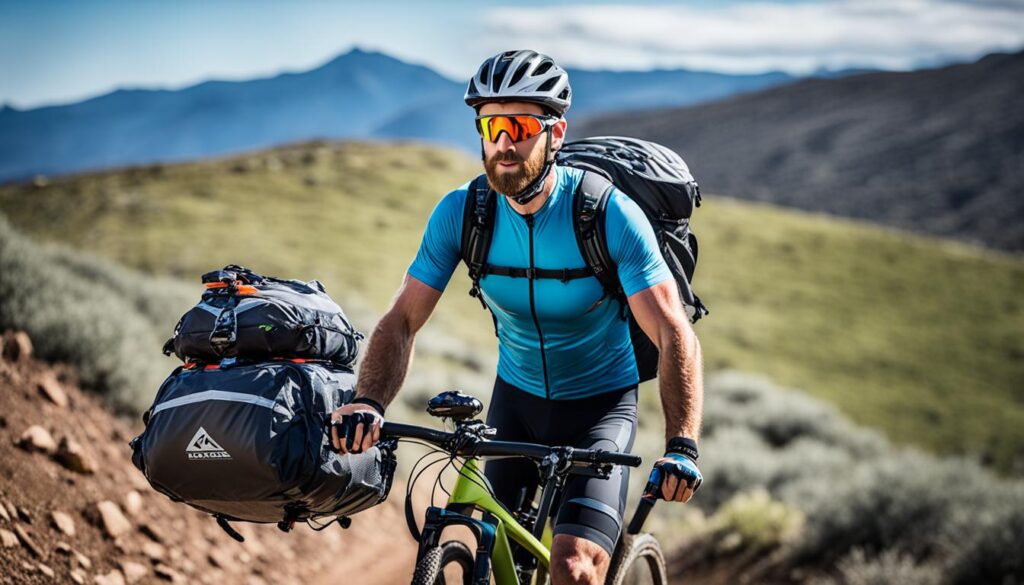
As you can see, there are several alternatives to fenders that mountain bikers can consider. Each option has its own trade-offs, so it’s important to weigh the pros and cons based on individual preferences and riding conditions. Whether it’s clip-on fenders, appropriate clothing, or attachable accessories, riders have options to protect themselves from road spray and debris without the need for traditional fenders.
Considerations for Different Riding Styles
The decision to use fenders on a mountain bike ultimately comes down to individual riding styles and preferences. Some riders who prioritize comfort and protection may opt for fenders, while others who focus on performance and specialized riding may choose to forgo them. It is important for riders to consider their specific needs and the conditions in which they ride when deciding whether or not to use fenders on their mountain bikes.
Different Riding Styles
When it comes to mountain biking, there are various riding styles that riders may adopt based on their preferences and skill levels. These different riding styles can influence the choice to use fenders on a mountain bike.
- Trail Riding: Riders who enjoy riding on established trails may find fenders beneficial, especially in wet and muddy conditions. Fenders can help protect them from spraying mud and debris, keeping them and their bikes cleaner.
- Downhill Riding: Downhill riders prioritize speed and adrenaline, and may choose not to use fenders to maximize their bike’s performance. In this style of riding, fenders can potentially affect a rider’s aerodynamics and maneuverability.
- Enduro Riding: Enduro riders often tackle a combination of uphill and downhill sections, requiring a balance between performance and protection. Some enduro riders may opt for fenders to shield themselves from road spray and debris without compromising their bike’s agility.
Specialized Riding and Fenders
Riders who engage in specialized mountain biking activities may have specific considerations when it comes to using fenders.
“For riders participating in competitions or technical riding, the weight and aerodynamic drag caused by fenders can be a concern. These riders prioritize performance and may choose to forgo fenders to maximize their speed and agility on the trails.”
Seasonal Considerations
The choice to use fenders on a mountain bike can also be influenced by the prevailing weather conditions and riding seasons.
- Wet Seasons: During rainy seasons or in areas with frequent precipitation, fenders can be highly useful in keeping riders dry and minimizing the impact of road spray. Riders who frequently ride in wet conditions may find fenders to be an essential accessory.
- Dry Seasons: In dry and dusty conditions, fenders may not provide as much benefit. Riders in these areas may prioritize other accessories or modifications to enhance their riding experience.
Ultimately, the decision to use fenders on a mountain bike should be based on personal preferences, riding style, and the conditions riders frequently encounter. It’s important to weigh the advantages and disadvantages to ensure the best riding experience for each individual.
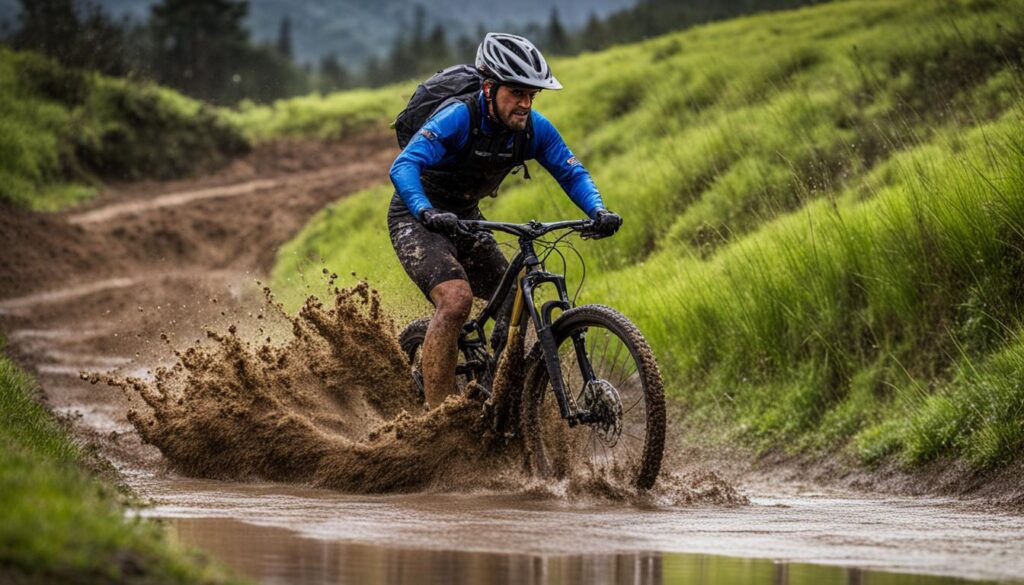
| Riding Style | Pros of Using Fenders | Cons of Using Fenders |
|---|---|---|
| Trail Riding | Protection from road spray and debris Keeps rider and bike cleaner |
Potential for clogging in muddy conditions May affect bike’s aerodynamics |
| Downhill Riding | Unobstructed bike performance Maximized speed and maneuverability |
No protection from road spray and debris Increased exposure to flying objects |
| Enduro Riding | Partial protection from road spray and debris Balance between performance and comfort |
Potential for clogging in muddy conditions Slight impact on bike’s aerodynamics |
The Benefits of Fenders on Gravel Bikes
While mountain bikes may not commonly have fenders, it is worth noting that gravel bikes, which share some similarities with mountain bikes, often come equipped with fenders. This is because gravel biking involves a mix of road and off-road riding, making fenders more practical in wet and muddy conditions.
When riding a gravel bike, fenders offer several benefits:
- Improved Comfort: Fenders help reduce the amount of road spray and debris that can be kicked up while riding, providing a more comfortable and enjoyable experience.
- Protection from Road Spray: Fenders shield both the rider and the bike from the spray of water, mud, and other particles that can be present on wet or muddy roads. This helps keep the rider cleaner and prevents unnecessary damage to the bike.
- Reduced Maintenance: By minimizing the amount of dirt and grime that comes into contact with the bike components, fenders can help reduce the frequency of maintenance tasks such as cleaning and lubricating.
Overall, fenders on gravel bikes contribute to a more pleasant and hassle-free riding experience, allowing cyclists to tackle a variety of terrains without having to worry about the effects of wet conditions. Whether it’s a leisurely ride or a challenging gravel race, fenders offer practical advantages for gravel bikers.
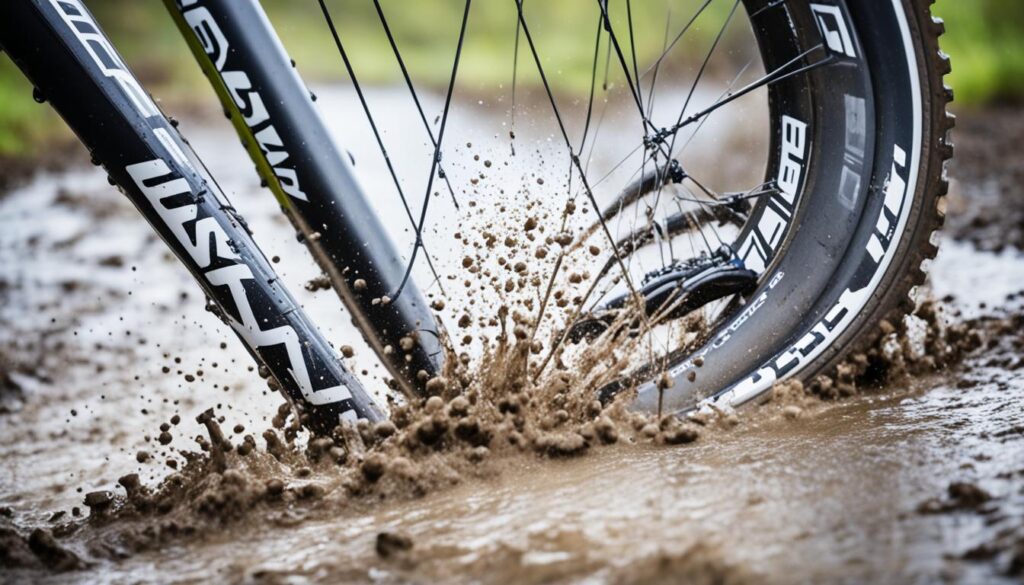
“Having fenders on my gravel bike has been a game-changer. I no longer have to deal with the constant spray of water and mud, and my bike stays cleaner for longer. It’s made riding in wet conditions much more enjoyable and worry-free.” – Sarah, avid gravel cyclist
Conclusion
In conclusion, the absence of fenders on mountain bikes can be attributed to several factors. The practical challenges faced in off-road conditions, including the tendency for fenders to clog up with mud and debris, make them less practical for mountain biking. Additionally, the impact on performance, in terms of added weight and aerodynamic drag, is a concern for many riders who prioritize speed and maneuverability.
Fit and aesthetics also play a role in the absence of fenders on mountain bikes. Bikes designed specifically for mountain biking may lack the necessary attachment points or clearance to properly accommodate fenders. Moreover, some riders have aesthetic concerns and find fenders visually unappealing on their mountain bikes.
However, it is essential to consider individual riding styles and preferences when deciding whether or not to use fenders on a mountain bike. While they may not be common in mountain biking, fenders have their place in other cycling disciplines and can provide valuable benefits in specific riding conditions. Ultimately, the decision to use fenders on a mountain bike should be based on the rider’s specific needs, the conditions in which they ride, and their personal preferences.
FAQ
Why don’t mountain bikes come equipped with fenders?
Are there alternative options for protection against road spray and debris?
Should I use fenders on my mountain bike?
Do gravel bikes come equipped with fenders?
Olivia’s writing is not only informative but also inspiring. She has a knack for telling stories that capture the essence of cycling and the joy it brings to people’s lives. Her writing has been praised by readers and industry experts alike for its clarity, depth, and authenticity.
In addition to her writing, Olivia is also an avid cyclist. She enjoys exploring new trails and routes and has participated in several cycling events and races. Her first-hand experience with cycling gives her a unique perspective on the sport, reflected in her writing.
Overall, Olivia is a talented writer passionate about cycling and dedicated to producing high-quality content for FlatironBike. Her contributions to the magazine have helped make it a go-to source for cycling enthusiasts worldwide.
Mountain Bike
Why Don’t Mountain Bikes Come With Pedals? Learn Here!
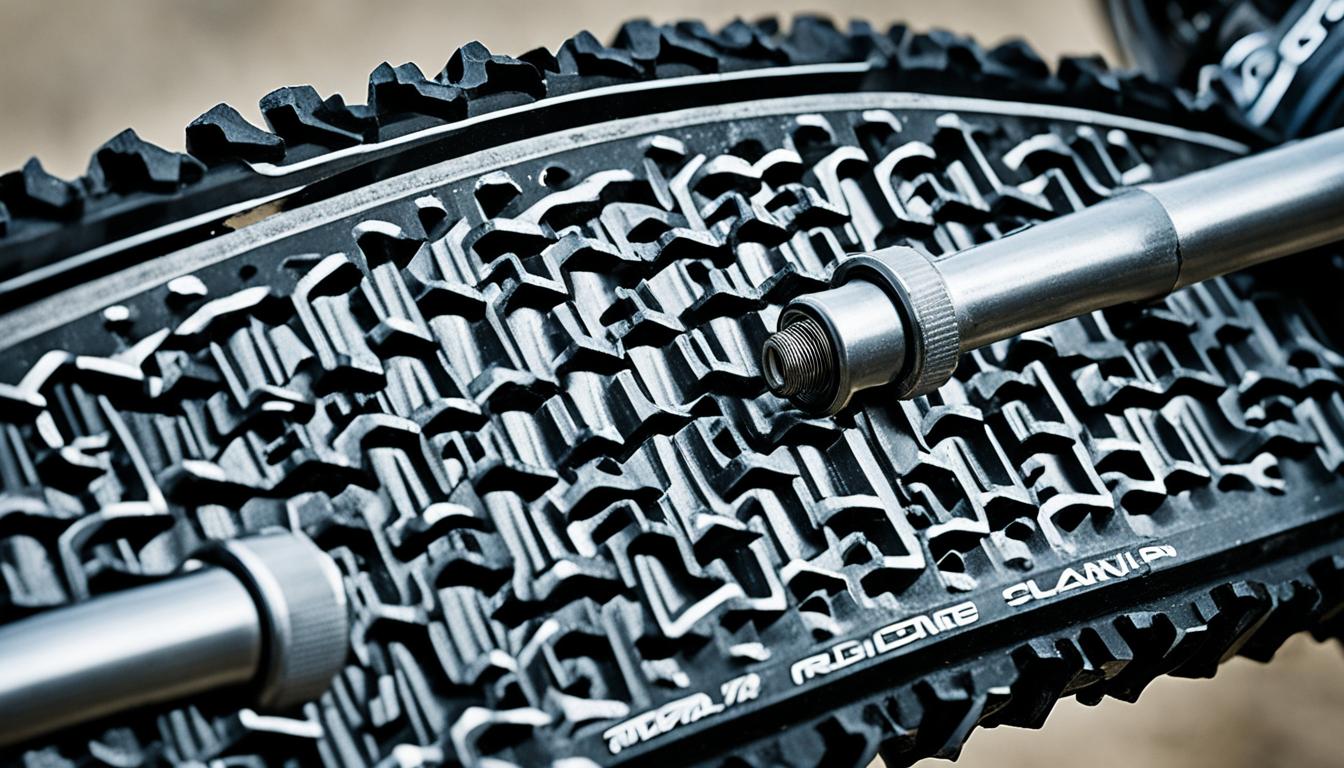
Did you know that when you purchase a brand new mountain bike, it doesn’t come with pedals? That’s right! The essential component that connects you to the bike is missing. But why is that? Why do manufacturers leave it up to you to choose the pedals for your new ride? Let’s dive into the world of mountain bike pedals and find out why this surprising fact is actually a benefit for riders.
Key Takeaways:
- Mountain bikes don’t come with pedals to allow riders to choose the best pedals for their specific needs and preferences.
- There are two main types of mountain bike pedals: clipless pedals and flat pedals.
- The choice of pedal type can greatly impact the overall biking experience, and by not including pedals with the bike, riders have the freedom to select the pedals that best suit their individual needs and preferences.
- Excluding pedals helps manufacturers reduce production costs and offer bikes at different price ranges.
- By selling mountain bikes without pedals, manufacturers provide consumers with the opportunity to choose their preferred type of pedal separately, catering to the diverse needs and preferences of riders.
Variety in Mountain Bike Pedal Types
When it comes to mountain biking, choosing the right pedals is essential for a comfortable and enjoyable ride. There are two main types of mountain bike pedals: clipless pedals and flat pedals. Let’s explore each of these pedal types and their unique features.
Clipless Pedals
Clipless pedals may sound counterintuitive, but they are the go-to choice for many mountain bikers. These pedals use a cleat system that attaches to the rider’s cycling shoes, providing a secure connection between the foot and the pedal. This connection offers maximum control, stability, and pedaling efficiency, especially during technical rides and challenging terrains.
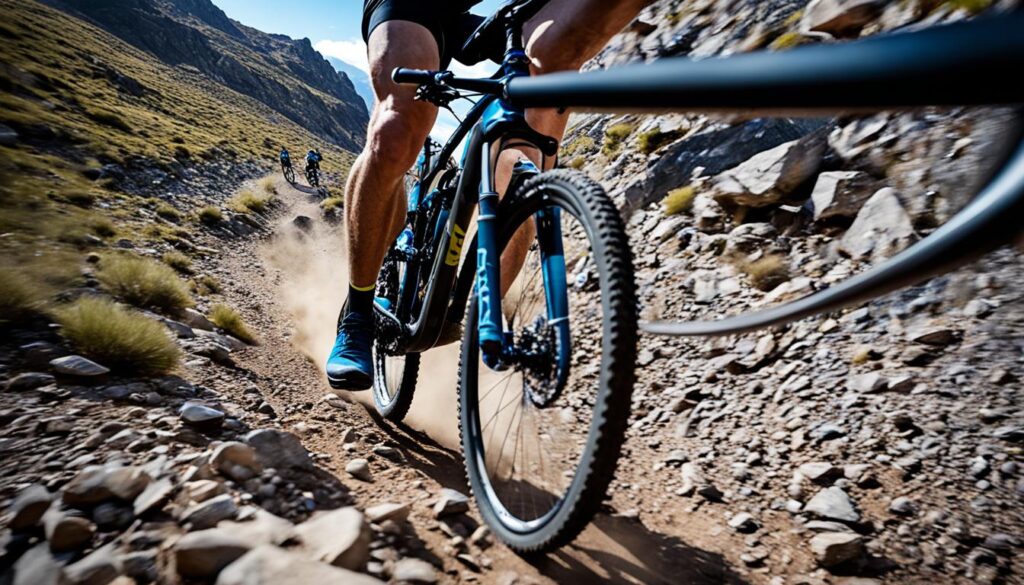
Designed for serious riders, clipless pedals allow for efficient power transfer, enabling cyclists to generate more force with each pedal stroke. They also provide consistent foot placement, ensuring a balanced and controlled riding experience. However, it’s important to note that using clipless pedals requires practice and getting used to the quick-release mechanism for safety purposes.
Flat Pedals
If you prefer a more casual and relaxed cycling experience, flat pedals, also known as platform pedals, are the way to go. These pedals feature a wide, flat surface that allows riders to comfortably place their feet without the need for specialized cycling shoes.
Flat pedals provide a sense of freedom on the trails, allowing for easy foot adjustments and quick removal of the foot from the pedal if needed. This makes them a popular choice for riders who frequently encounter technical sections or prefer to ride with regular footwear. The larger platform of flat pedals provides more stability and confidence during jumps, drops, and tricks.
While flat pedals may not offer the same efficiency as clipless pedals when it comes to power transfer, they promote a more relaxed riding style and allow riders to rely on their natural pedal stroke. Flat pedals are also easier to use for beginners, as they eliminate the learning curve associated with clipless pedal systems.
Ultimately, the choice between clipless pedals and flat pedals comes down to personal preference and riding style. Some riders prioritize maximum control and performance, while others prefer the freedom and versatility offered by flat pedals. Whatever your preference may be, both pedal types have their advantages and can enhance your mountain biking experience.
Personalization of Biking Experience
When it comes to mountain bike pedals, personal preferences play a crucial role in shaping the overall biking experience. Every rider has their own unique needs and desires when it comes to how they connect with their bike, and the choice of pedal type can make a significant difference.
For some riders, control, stability, and a strong connection to the bike are of utmost importance. They seek pedals that provide maximum power transfer and ensure their feet stay securely in place, especially during intense climbs and technical sections. These riders prioritize performance and efficiency, as they strive to conquer challenging terrain with precision.
On the other hand, there are riders who lean towards a more relaxed and recreational biking experience. They prioritize comfort, freedom of movement, and the ability to easily adjust their foot position on the pedals. These riders may prefer a flat pedal setup, which allows them to quickly and effortlessly put a foot down for balance or to navigate obstacles without the hassle of clipping in and out.
The beauty of not including pedals with a mountain bike purchase is that riders have the freedom to select the pedals that best suit their individual needs and preferences. Whether it’s choosing between clipless pedals or flat pedals, riders have the opportunity to create a truly personalized biking experience that aligns with their riding style and goals.
So, whether you’re a rider who thrives on maximum control and efficiency or someone who prefers a more laid-back approach, the choice of mountain bike pedals allows you to tailor your biking experience to suit your own personal preferences.
Our Personal Preference: Flat Pedals
“Flat pedals offer a sense of freedom on the trails. They allow for easy foot adjustments and give me the confidence to quickly put a foot down when needed. Plus, they make me feel more connected to my bike and give me the flexibility to experiment with different foot positions for better handling.” – Sarah, avid mountain biker
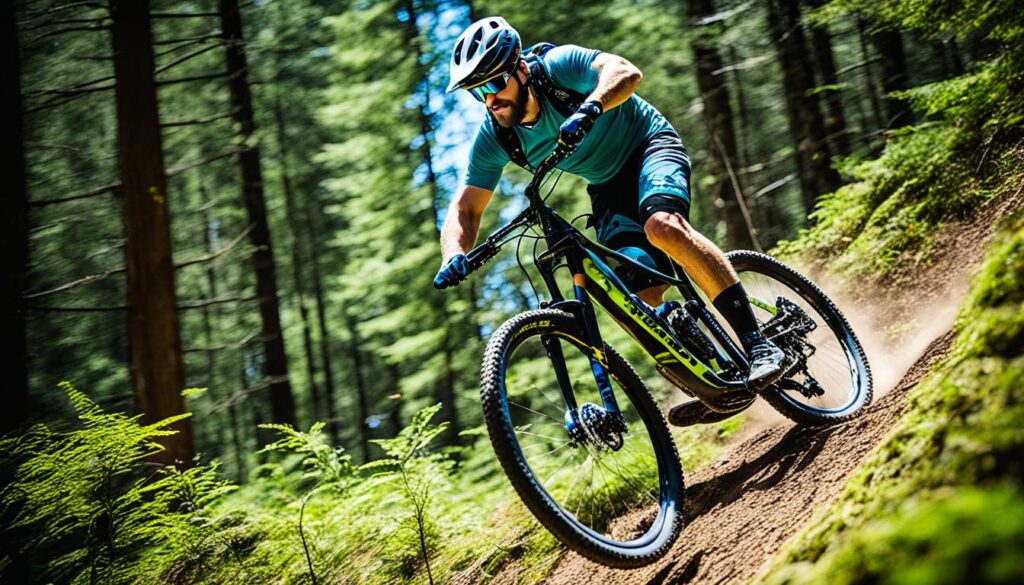
Cost Considerations for Manufacturers
When it comes to mountain bikes, one might wonder why they don’t come with pedals. Well, one of the main reasons is to reduce production costs for manufacturers. By excluding pedals from the package, they can offer bikes at a more affordable price point, especially for lower-end models. This allows a wider range of riders to access and enjoy the thrill of mountain biking without breaking the bank.
Furthermore, higher-end mountain bikes often do not come with pedals either. This is because these bikes generally cater to experienced riders who already have their preferred pedals. By offering the bike without pedals, manufacturers can provide these riders with the flexibility to use their own trusted pedal systems, ensuring a seamless integration between the bike and the rider’s personal setup.
Optimizing production costs is crucial for manufacturers, as it allows them to offer bikes at different price ranges, appealing to a broader market. By providing bikes without pedals, they can focus on enhancing other aspects of the bike’s performance, such as the frame, suspension, and components. This approach aligns with the diverse needs and preferences of riders, enabling manufacturers to cater to a wider audience.
Ultimately, the choice to exclude pedals from mountain bikes is driven by cost considerations. It allows manufacturers to offer bikes at competitive prices while giving riders the freedom to select their preferred pedals. Whether riders opt for flat pedals, clipless pedals, or another type altogether, they can personalize their biking experience and enjoy the thrill of mountain biking with a setup that suits their individual style and preferences.
| Advantages | Disadvantages | |
|---|---|---|
| Cost Reduction for Lower-End Models | ✔️ More affordable price point | |
| Flexibility for Experienced Riders | ❌ Potential inconvenience for beginners | |
| Enhanced Focus on Bike Performance | ✔️ Ability to optimize other bike components |

By excluding pedals, manufacturers can focus on delivering high-quality bikes that cater to a wide range of riders, maximizing performance and enjoyment on the trails.
Market Diversity and Consumer Choice
When it comes to mountain bike pedals, the market offers a diverse range of options to cater to various consumer preferences. From flat pedals to clipless pedals and hybrid designs, riders have the opportunity to choose the perfect pedal type that suits their individual needs. By providing mountain bikes without pedals, manufacturers empower consumers to personalize their biking experience and optimize their performance on the trails.
Let’s take a closer look at the different types of mountain bike pedals:
1. Flat Pedals
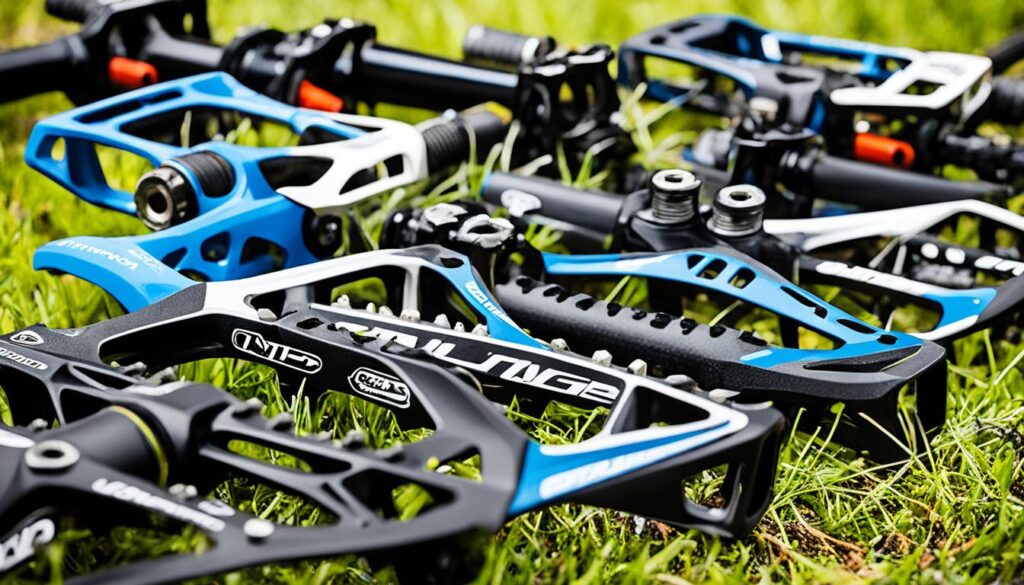
Flat pedals, also known as platform pedals, are popular among riders who prefer a more relaxed and casual cycling experience. These pedals offer easy foot adjustment and provide a sense of freedom on the trails. With a larger contact area, flat pedals promote better weight distribution and technique utilization. They are low-maintenance and deliver increased power and stability, making them a great choice for riders seeking versatility and maneuverability on diverse terrains.
2. Clipless Pedals
Clipless pedals, despite their name, actually involve clipping in to secure the rider’s shoes to the pedal. These pedals utilize a cleat system and offer maximum control, stability, and pedaling efficiency. They enable riders to maintain a consistent and fast cadence, reducing fatigue and ensuring optimal power transfer. Clipless pedals are particularly favored by experienced riders who prioritize a connection to the bike and precise control, especially on technical terrains.
3. Hybrid Pedals
Hybrid pedals combine the best of both worlds, providing riders with the option to switch between flat pedals and clipless pedals. These pedals feature a dual-sided design with a flat platform on one side and a clipless mechanism on the other. Hybrid pedals offer versatility and cater to riders who appreciate the flexibility to adapt to different riding styles or quickly transition between clipless and flat options.
“The diversity in pedal designs allows riders to choose the type that aligns with their preferences, riding style, and comfort. Whether you’re a beginner exploring off-road trails or an experienced rider seeking maximum efficiency and control, the market has pedal options to suit everyone.”
The market diversity in mountain bike pedals empowers riders to select the perfect pedal type that complements their skills and delivers an optimal riding experience. By not including pedals with the bike, manufacturers acknowledge the importance of consumer preferences and provide a wide array of choices to cater to the diverse needs of riders.
| Pedal Type | Advantages | Disadvantages |
|---|---|---|
| Flat Pedals |
|
|
| Clipless Pedals |
|
|
| Hybrid Pedals |
|
|
Flat Pedals for Mountain Biking: PROS
When it comes to mountain biking, flat pedals offer a range of advantages that make them a popular choice among riders. Whether you’re a beginner exploring the trails or an experienced rider looking for a different riding experience, flat pedals have a lot to offer.
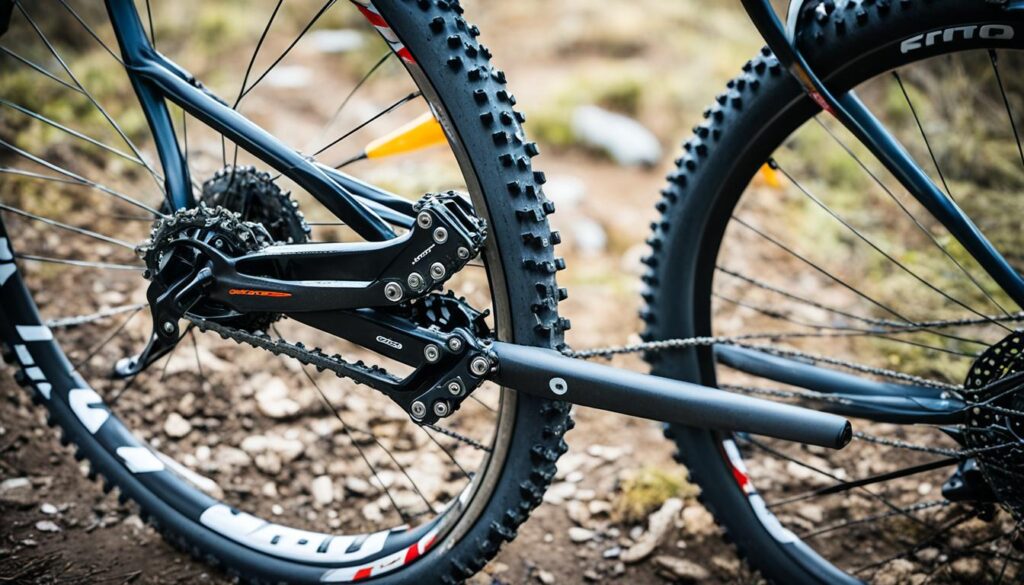
1. Safety and Confidence
One of the key advantages of flat pedals is the ease of disengaging from the bike. With flat pedals, you can quickly and easily remove your feet from the pedals, providing a sense of safety and confidence. This is particularly important when navigating challenging sections of the trail or encountering unexpected obstacles.
2. Freedom and Maneuverability
Flat pedals allow for more freedom and maneuverability on the trails. Unlike clipless pedals, which require a specific motion to engage and disengage, flat pedals offer a more natural foot movement. This makes it easier to navigate technical sections, corners, and jumps, giving you greater control and agility on the bike.
3. Focus on Technique and Weight Distribution
Using flat pedals encourages riders to focus on using their feet to control the bike. This promotes better technique and weight distribution, as you learn to actively use your feet to steer, balance, and apply pressure. By honing these skills, you can enhance your overall biking performance and feel a stronger connection with the bike.
4. Low Maintenance
Flat pedals are known for their simplicity and durability. They don’t require specialized cleats or complex adjustments, making them easy to install and maintain. With flat pedals, you can spend more time riding and less time worrying about pedal maintenance.
5. Increased Power and Stability
Flat pedals provide a larger platform for your feet, allowing for increased power transfer and stability. The larger surface area distributes your weight more evenly, providing a solid foundation for pedaling and generating power. This can be particularly beneficial when climbing, sprinting, or navigating rough terrain.
| Advantages of Flat Pedals | |
|---|---|
| Safety and Confidence | Freedom and Maneuverability |
| Focus on Technique and Weight Distribution | Low Maintenance |
| Increased Power and Stability |
Flat Pedals for Mountain Biking: CONS
While flat pedals offer numerous advantages for mountain biking, it’s essential to consider the potential disadvantages they bring. Understanding these drawbacks can help riders make informed decisions regarding their choice of pedals. Let’s take a closer look at the disadvantages of flat pedals:
- Increased risk of unexpected foot slippage: Without the secure locking mechanism provided by clipless pedals, there is a higher chance of your feet coming off the flat pedals unexpectedly. This can result in potential crashes and loss of control. Maintaining proper technique and foot positioning becomes even more crucial to mitigate this risk.
- Reduced pedaling efficiency: Compared to clipless pedals, flat pedals may slightly compromise pedaling efficiency. While this may not be a major concern for casual riders, those seeking maximum power transfer and efficiency during intense rides may find flat pedals to be less suitable.
- Challenges in maintaining high cadence and power on rough terrain: Flat pedals can make it harder to maintain a high cadence or power through rough and technical terrain. The absence of a secure attachment to the pedal can lead to potential foot slippage, making it more challenging to generate consistent power and maintain a smooth pedal stroke.
- Attention and consistency required for foot placement: With flat pedals, riders need to pay extra attention to maintaining consistent foot placement. The absence of a clipless system means there is no automatic guiding mechanism to keep your feet optimized for power transfer. Riders must consciously focus on positioning their feet correctly to maximize control and riding efficiency.
- More vulnerable to hitting trail obstacles: Flat pedals typically have a larger surface area compared to clipless pedals. While this can provide a more stable platform, it also increases the risk of hitting trail obstacles such as rocks, roots, or logs. Riders need to consider the potential for pedal strikes and adjust their riding style accordingly.
It’s important to note that the disadvantages of flat pedals should not overshadow their many advantages. Each rider’s skill level, riding style, and personal preferences should be taken into account when deciding whether flat pedals are the right choice for mountain biking adventures.
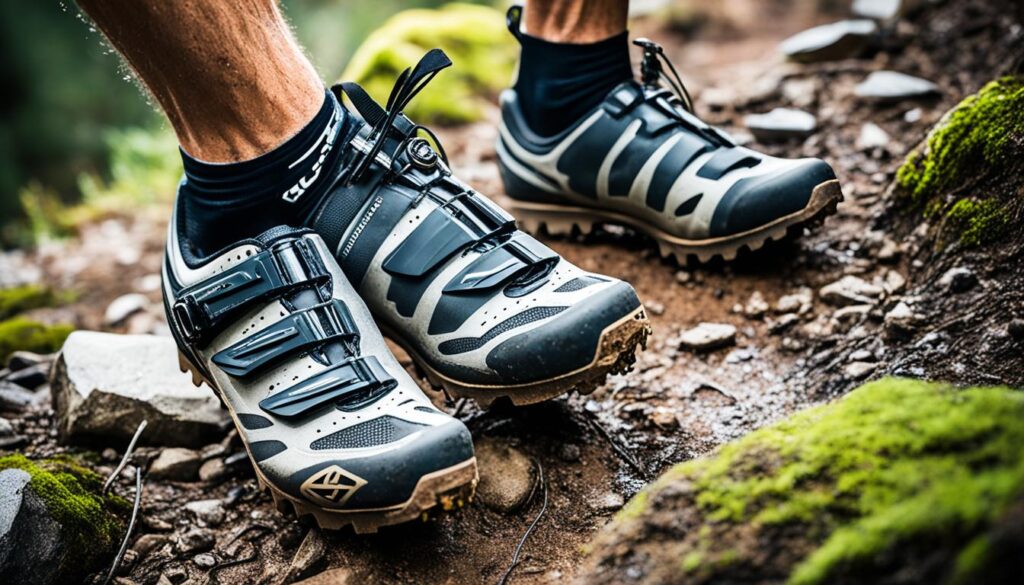
Clipping in for Mountain Biking: PROS
In the world of mountain biking, clipless pedals offer a range of advantages that enhance your riding experience. Let’s dive into the benefits of using clipless pedals on the trails.
– Maintaining a Consistent and Fast Cadence: With clipless pedals, your feet are securely attached to the pedals, allowing for a smoother and more efficient pedaling motion. This enables you to maintain a consistent cadence, keeping your momentum and speed up throughout your ride.
– Utilizing Full Pedal Strokes: By using clipless pedals, you can take advantage of full pedal strokes, engaging both the upstroke and the downstroke. This maximizes your power output and helps to reduce fatigue, especially during long climbs or challenging terrain.
– Offering Foot Placement Consistency: Clipless pedals provide a consistent foot placement on the pedal, ensuring that your feet are always in the optimum position for power transfer. This results in improved overall efficiency and control, allowing you to tackle technical sections with precision.
– Easier Pedaling over Rough Terrain: With clipless pedals, your feet are firmly attached to the pedals, providing greater stability and control over rough and uneven terrain. This allows you to pedal through obstacles without the fear of your feet slipping off the pedals.
– Greater Rear Wheel Control: The connection between your feet and the pedals provided by clipless pedals translates to enhanced rear wheel control. This enables you to better maneuver your bike, making it easier to navigate tight corners and technical descents.
– Increased Clearance over Trail Obstacles: Clipless pedals typically have a low-profile design, providing increased clearance over trail obstacles such as rocks, roots, and logs. This allows you to ride over these obstacles without the fear of hitting your pedals and potentially losing balance.
– More Efficient Power Transfer: Clipless pedals promote a more efficient power transfer from your legs to the bike. The direct connection between your feet and the pedals ensures that all your energy is effectively transferred to the drivetrain, maximizing your pedaling efficiency.
Clipless pedals truly elevate your mountain biking experience by increasing your control, efficiency, and overall riding performance. With their many advantages, it’s no wonder that they are a popular choice among avid mountain bikers.
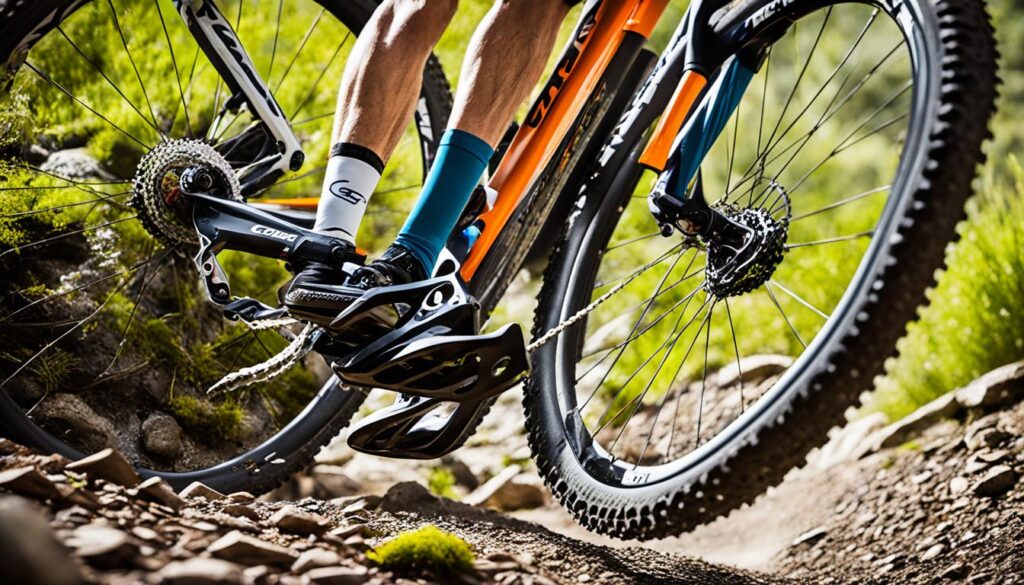
So, if you’re looking to take your mountain biking to the next level, consider making the switch to clipless pedals and enjoy the benefits they have to offer.
“We found that using clipless pedals significantly improved our pedaling efficiency and control on the trails. The connection between our feet and the pedals allowed us to confidently tackle technical sections and maintain a consistent and fast cadence throughout our rides.” – Experienced Mountain Bikers
Clipping in for Mountain Biking: CONS
While clipless pedals offer numerous advantages, it’s important to consider their disadvantages as well. Understanding the potential drawbacks of clipless pedals can help riders make informed decisions about their mountain biking setup.
1. Getting Stuck and Potential Crashes
One disadvantage of clipless pedals is the risk of getting stuck in the pedals. This can be particularly hazardous when riders need to quickly put a foot down for balance, increasing the likelihood of crashes. The reliance on clipping in and out quickly, especially in challenging sections of the trail or during climbs, can also add to the difficulty and potential for accidents.
2. Unexpected Detachment and Crashes
Another concern with clipless pedals is the possibility of unexpectedly coming unclipped during a ride. This sudden detachment can catch riders off guard and lead to crashes, especially in technical terrain where control and stability are crucial. Riders need to develop the necessary skill and muscle memory to prevent unintentional unclipping.
3. Cleat Setup and Potential Injury
Clipless pedals require proper cleat setup for optimal performance and safety. Incorrect cleat positioning can result in discomfort, inefficiency, and even injury. Riders must take the time to properly install and adjust their cleats to avoid potential issues such as knee strain or foot discomfort.
4. Raised Center of Gravity and Control
Using clipless pedals can slightly raise the rider’s center of gravity on the bike. This can affect the overall control and handling of the mountain bike, especially during technical maneuvers or when navigating challenging terrain. Riders need to adapt to the altered bike dynamics and ensure they maintain a balanced and controlled riding position.
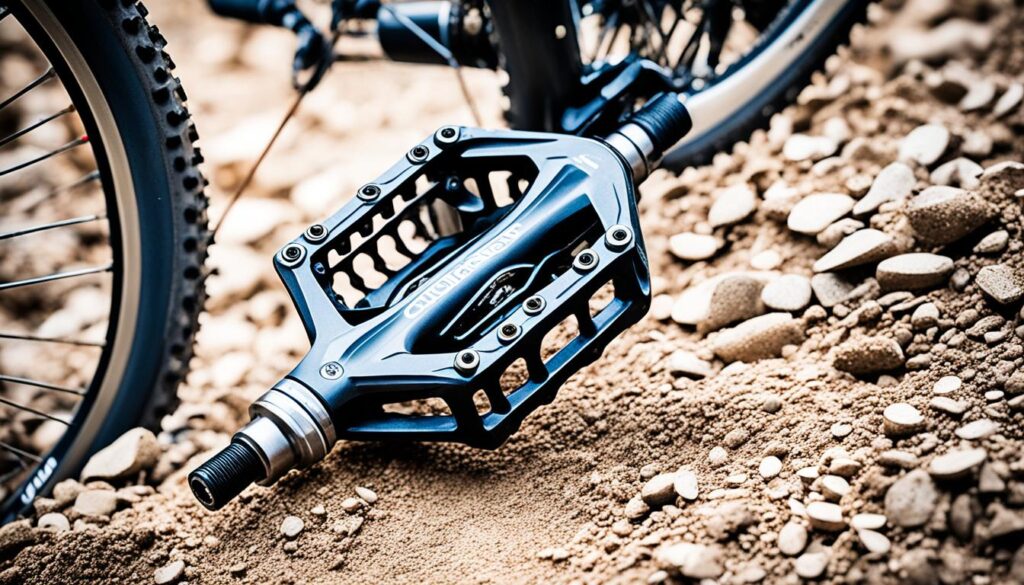
Conclusion
The choice of mountain bike pedals is crucial for creating a personalized riding experience. Manufacturers understand this and deliberately leave the selection of pedals to riders. By not including pedals with the bike, manufacturers allow us to tailor our bikes to our individual needs and preferences. This level of customization enhances the enjoyment and satisfaction we derive from our biking adventures.
Whether we opt for flat pedals or clipless pedals, the diverse market ensures that there is a pedal type for every rider. Flat pedals offer a sense of freedom and maneuverability, allowing us to easily navigate technical sections and corners while promoting better technique. On the other hand, clipless pedals provide superior control, stability, and pedaling efficiency, enabling us to maintain a consistent and powerful cadence.
Ultimately, it is our personal preferences and riding style that dictate our choice of mountain bike pedals. We can select the pedal type that aligns with our skills, style, and budget. This freedom of choice empowers us to create a personalized riding experience that caters to our specific needs and ensures that every pedal stroke brings us closer to the thrilling joy of mountain biking.
FAQ
Why don’t mountain bikes come with pedals?
What are the main types of mountain bike pedals?
Why do mountain bikes come without pedals?
What advantages do flat pedals offer for mountain biking?
What are the disadvantages of using flat pedals for mountain biking?
What advantages do clipless pedals offer for mountain biking?
What are the disadvantages of using clipless pedals for mountain biking?
Why is it important to have a personalized biking experience?
Mountain Bike
Why Mountain Bikes Lack Kickstands – Our Insights

Did you know that only a small percentage of mountain bikes come equipped with kickstands? In fact, less than 10% of mountain bikes on the market today have this traditional accessory.
When it comes to mountain biking, kickstands have become a rarity rather than a standard feature. So, what’s behind this shift? In this article, we will explore the reasons why mountain bikes lack kickstands and provide insights into the factors that have contributed to their decline in popularity.
Key Takeaways:
- Kickstands are found on less than 10% of mountain bikes.
- Weight reduction and changes in bike design have made kickstands less practical for modern bikes.
- Safety concerns and potential impacts on bike performance also contribute to the scarcity of kickstands on mountain bikes.
- Alternative options such as bike parking racks, wall mounts, and attachable kickstands provide convenience for parking and storage.
- Individual preferences and market demand play a significant role in the presence or absence of kickstands on bikes.
The History of Kickstands and Their Decline in Popularity
Let’s take a journey back in time to explore the fascinating history of kickstands and understand why they have experienced a decline in popularity. Introduced in the early 20th century, kickstands revolutionized the way cyclists parked their bikes. They offered a quick and convenient solution, allowing riders to prop their bikes up without the need for additional support.
However, as bike designs evolved and became lighter, kickstands started to lose their appeal. The desire for speed and agility led to the development of specialized bike types, such as racing and mountain bikes, which emphasized lightweight construction and aerodynamics. Kickstands were seen as unnecessary add-ons that added weight to the bike, potentially compromising performance.
“The rise of sleek and minimalist bike designs contributed to the declining popularity of kickstands.”
Moreover, advancements in bike technology and materials paved the way for innovative alternatives to kickstands. Manufacturers began integrating features like bike stands, wall mounts, and attachable kickstands into their designs, offering convenience without compromising the bike’s aesthetics or performance.
Despite the decline in popularity, kickstands still remain a beloved feature on certain bike types, such as city, cruiser, and touring bikes. These bikes prioritize utility and convenience, allowing riders to easily park their bikes during commutes or leisurely rides.
As bike design continues to evolve and adapt to the ever-changing needs of cyclists, the role of kickstands may further evolve. Their decline in popularity is a testament to the shifting landscape of bike design, where the pursuit of lightweight construction and sleek aesthetics takes precedence.
In the next section, we will explore why kickstands are rare on mountain bikes, diving into the specific factors that make them impractical for off-road adventures.

Stay tuned for more insights and revelations as we uncover the secrets hidden within the world of bike design.
Reasons Why Kickstands Are Rare on Mountain Bikes
When it comes to mountain bikes, kickstands are a rarity. This is not a coincidence but a result of several factors that make kickstands impractical for off-road adventures. Let’s explore the reasons why kickstands are rarely found on mountain bikes.
1. Design for Off-Road Activities:
Mountain bikes are meticulously designed to tackle rugged terrains and navigate through challenging trails. These bikes prioritize factors such as traction, maneuverability, and shock absorption to provide a smooth and controlled riding experience. Introducing a kickstand would disrupt the bike’s balance and interfere with its performance on demanding trails.
2. Weight Reduction Considerations:
Modern mountain bikes are all about weight reduction. Manufacturers employ advanced materials and innovative design techniques to make bikes as lightweight as possible while maintaining their strength and durability. Adding a kickstand, even a lightweight one, would introduce unnecessary weight that compromises the bike’s agility and responsiveness on the trails.
3. Safety Concerns:
During intense off-road rides, mountain bikers encounter various obstacles and demanding situations. A kickstand could potentially become an obstruction, catching onto rocks, tree roots, or uneven surfaces. This poses a safety risk, leading to potential accidents or damage to the bike.
Overall, while kickstands may be useful for other types of bikes and recreational riding, they are simply not suited for the specific demands and challenges that mountain biking presents. The design focus, weight reduction efforts, and safety considerations all contribute to the rarity of kickstands on mountain bikes.
Kickstand Comparison
| Kickstand Features | Mountain Bikes | City Bikes | Touring Bikes |
|---|---|---|---|
| Design | Focused on off-road performance | Optimized for urban environments | Prioritizes long-distance touring |
| Weight | Minimal weight for agility | Can accommodate slightly heavier kickstands | Weight can be managed due to storage requirements |
| Safety | Potential obstructions and safety risks on trails | Minimal safety concerns in urban settings | Depends on specific touring conditions |
| Convenience | Not designed with immediate parking convenience in mind | Can be more practical for quick stops in urban areas | Useful for extended stops during touring |
As seen in the table above, the design, weight, safety, and convenience factors all vary when considering kickstands for different types of bikes. Mountain bikes, with their focus on off-road performance and weight reduction, simply don’t align with the suitability and practicality of kickstands.
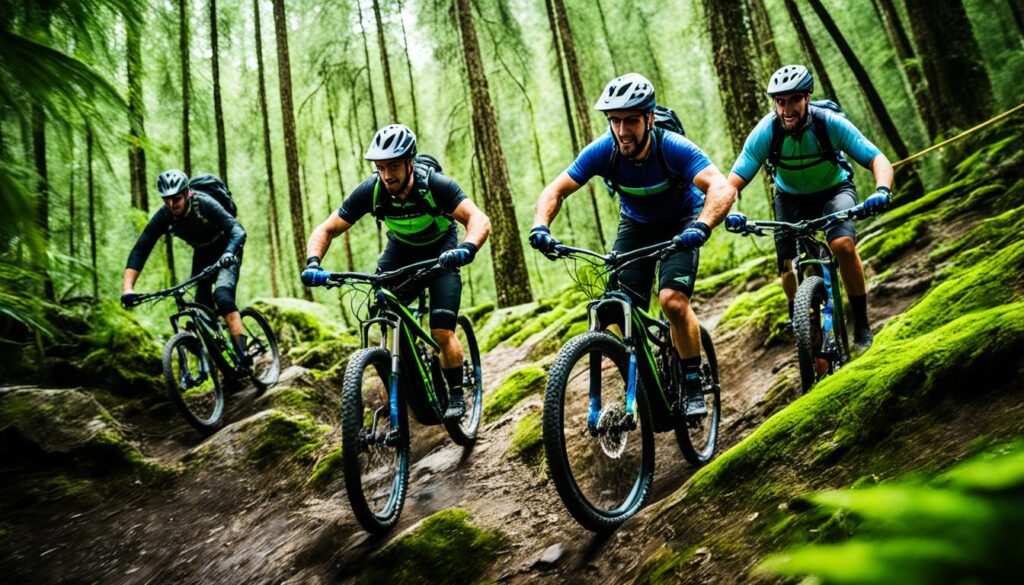
To further illustrate the challenging and dynamic nature of mountain biking, let’s hear from a seasoned rider:
“When I hit the trails, it’s all about agility and control. Having a kickstand on my mountain bike would make it feel clunky and imbalanced. I prioritize weight reduction and ensuring that my bike can handle any obstacle I encounter. I can always find alternative ways to park my bike when I’m taking a break in nature.” – Emily, avid mountain biker
Mountain biking enthusiasts like Emily embrace the absence of kickstands on their bikes, knowing that it allows them to fully immerse themselves in the sport and conquer challenging terrains with ease.
Safety Concerns and Other Reasons Against Kickstands
When considering the use of kickstands on bikes, it’s important to take into account the safety concerns and potential drawbacks they may present. While kickstands can provide convenient parking and storage solutions, they can also pose certain risks and affect bike performance.
Kickstands can pose safety risks if they become loose or dislodged while riding. Imagine cruising down a trail, only to have your kickstand unexpectedly collapse or catch on an obstacle. This sudden instability can lead to accidents, injuries, and damage to both the bike and rider. It’s crucial to prioritize safety and ensure that all bike components, including kickstands, are secure and properly maintained.
Aside from safety concerns, kickstands can also hinder bike performance and handling. On rough terrains and trails, a kickstand can interfere with the bike’s balance and maneuverability. The added weight and potential for the kickstand to catch on obstacles can disrupt the bike’s stability, making it more difficult to navigate challenging terrain. Mountain bikers, in particular, rely on optimal bike performance to tackle rugged trails and maximize their riding experience.
Furthermore, many riders find kickstands unnecessary and prefer the sleeker aesthetic and streamlined functionality of a bike without one. Without a kickstand, bikes can maintain a clean and uncluttered appearance, showcasing their design and performance features without any additional appendages.
While kickstands have their benefits in certain contexts, it’s important to weigh the potential safety concerns and impacts on bike performance, as well as consider personal preferences and the specific needs of your cycling style.
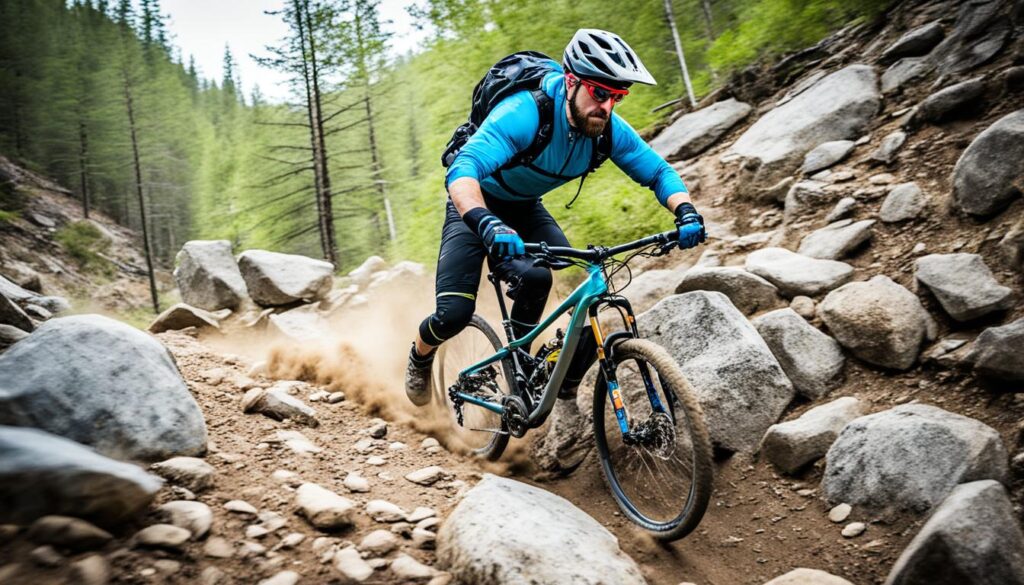
Quote:
“Kickstands can be useful for convenience, but they can also compromise safety and hinder bike performance. It ultimately comes down to personal preference and the type of riding you do.” – Emma Thompson, avid mountain biker
Convenience Alternatives to Kickstands
While kickstands may not be suitable for all bikes, there are several convenient alternatives available that cater to different parking and storage needs. These alternatives provide stability and practicality without the need for a traditional kickstand. Some popular options include:
Bike Parking Racks
Bike parking racks are versatile and ideal for public or commercial spaces. They offer a secure and organized way to park multiple bikes at once. Bike racks come in various designs, such as vertical or horizontal configurations, and can accommodate different types of bikes. With bike parking racks, you can ensure your bike is safely stored while maximizing available space.
Wall Mounts
If you prefer to save floor space and keep your bike indoors, wall mounts are an excellent choice. These mounts securely attach to the wall, allowing you to hang your bike vertically. Wall mounts not only save space but also protect your bike from potential damage. They are particularly useful in apartments, garages, or small storage areas where space is limited.
Bike Stands
Bike stands are another alternative to kickstands, offering stability and convenience for parking your bike. These stands utilize a sturdy base or frame to support the bike, eliminating the need for a kickstand. Bike stands come in various types, including floor stands and portable stands, making them suitable for both indoor and outdoor use. They provide a reliable option for keeping your bike upright and secure.
Attachable Kickstands
If you still prefer the functionality of a kickstand, you can consider attachable kickstands. These kickstands can be easily installed on most bike frames, providing the convenience of a kickstand when needed. Attachable kickstands are adjustable and lightweight, ensuring they do not interfere with your bike’s performance. They are a practical solution for riders who occasionally require a kickstand without permanently attaching one to their bike.
By exploring these alternatives, you can find the perfect solution for parking and storing your bike, regardless of whether a traditional kickstand is suitable for your bike type or preferences.
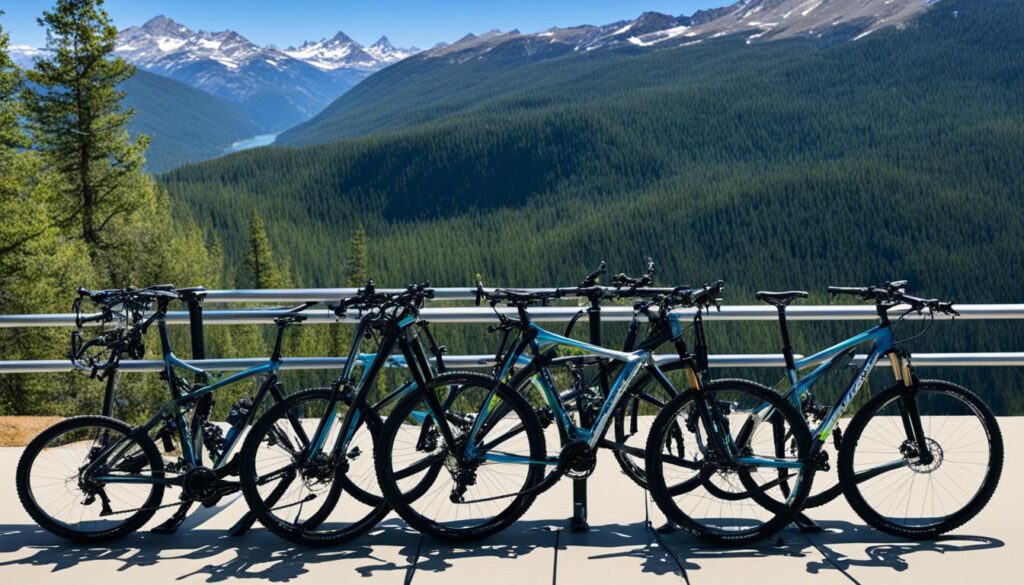
Installing an Aftermarket Kickstand
For riders who prefer the convenience and functionality of a kickstand, opting for an aftermarket kickstand is a viable solution. When choosing an aftermarket kickstand, it’s essential to select one made of durable materials that can withstand the demands of your biking adventures.
Ensure the aftermarket kickstand is compatible with your bike’s components to guarantee a secure and reliable installation. Different bikes may require specific kickstand designs, so it’s crucial to determine the compatibility before making a purchase.
The installation process for an aftermarket kickstand typically involves locating the attachment point on the bike frame and securing the kickstand using the provided hardware. This attachment point may vary based on your bike’s design, so refer to the installation instructions provided by the kickstand manufacturer for accurate guidance.
Here is a step-by-step guide to installing an aftermarket kickstand:
- Identify the attachment point on the bike frame for the kickstand installation.
- Position the kickstand against the attachment point and align it properly.
- Insert the provided bolts or screws through the kickstand’s mounting holes and into the attachment point.
- Tighten the bolts or screws securely using the appropriate tools, ensuring a stable and reliable attachment.
- Double-check the kickstand’s stability by gently applying pressure to ensure it can support the weight of the bike.
Following these steps will help you successfully install an aftermarket kickstand on your bike, allowing for easy and convenient parking wherever you go.
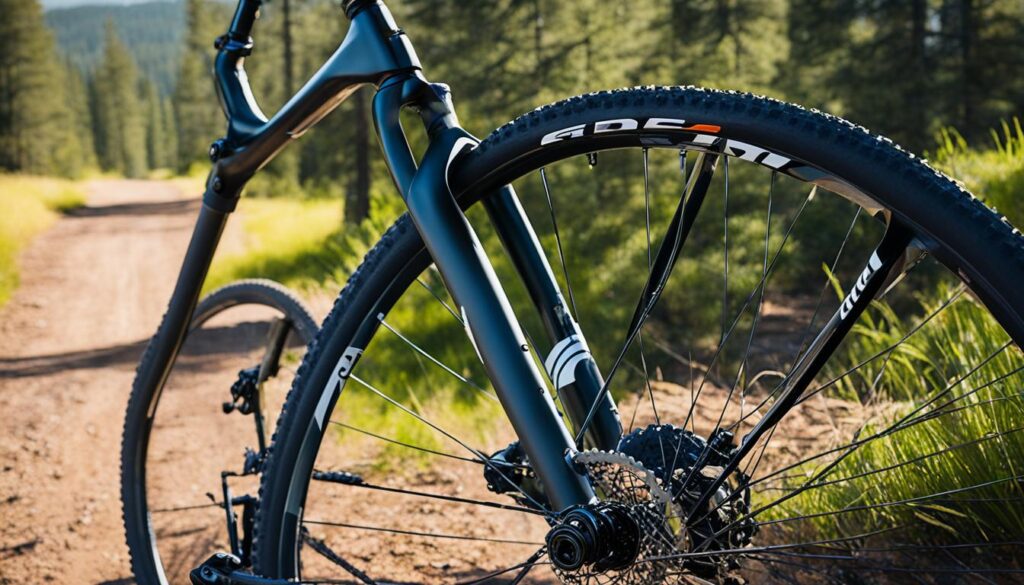
Preferences and Market Demand
When it comes to kickstands on bikes, personal preferences play a crucial role. Some riders value the practicality and convenience of having a kickstand, while others prioritize the sleek aesthetics and performance of a bike without one. At the end of the day, it’s all about finding the perfect balance that suits each individual’s needs.
Recognizing the diverse preferences of cyclists, bike manufacturers strive to create products that align with market demand. They carefully consider the feedback and desires of riders to ensure their offerings cater to a wide range of individuals. While kickstands may be less prevalent on certain types of bikes, the market still offers various options to cater to different preferences.
Understanding the kickstand preferences of consumers helps manufacturers design and produce bikes that reflect the evolving demands of the market. Whether it’s a sleek and minimalist design or a more practical convenience feature, the continuous research and development in the cycling industry seek to meet the ever-changing needs of riders.
Benefits of Kickstands According to Riders:
- Convenience for quick stops or breaks
- Prevention of scratches and damage to the bike
- Ease of parking without the need for leaning against walls or objects
Benefits of Bikes without Kickstands According to Riders:
- Sleek and minimalist appearance
- Improved bike performance and handling
- Reduced weight for better maneuverability
Customer Testimonial:
“I prefer having a kickstand on my bike as it allows me to take quick breaks without searching for a leaning spot. It’s convenient and saves me from potential scratches on my bike. Plus, it’s always ready to park anywhere!” – Lisa, avid cyclist
Customer Testimonial:
“I love the clean look of my bike without a kickstand. It feels sleek and streamlined, and I have no worries about it hindering my biking experience. I can easily find a secure spot to lean it, so a kickstand is unnecessary for me.” – Mike, passionate cyclist
Market Demand for Kickstands
While kickstands may not be as prevalent on certain types of bikes, such as racing or mountain bikes, there is still a market demand for them. Many riders value the convenience and peace of mind that kickstands offer, especially for urban commuting and recreational riding.
For city, cruiser, and touring bikes where practicality and utility are key, kickstands remain popular. They provide riders with the convenience of easily parking their bikes without the need for additional support or searching for a leaning spot.
Bike manufacturers understand the importance of meeting the demands of their customers, which is why they continue to offer a wide range of options when it comes to kickstands. By providing choices that cater to various preferences, they can ensure that every cyclist finds the perfect bike for their needs.
| Kickstand Preferences | Market Demand |
|---|---|
| Preference for kickstands | Strong |
| Preference for bikes without kickstands | Significant |
| No preference or indifferent | Minority |
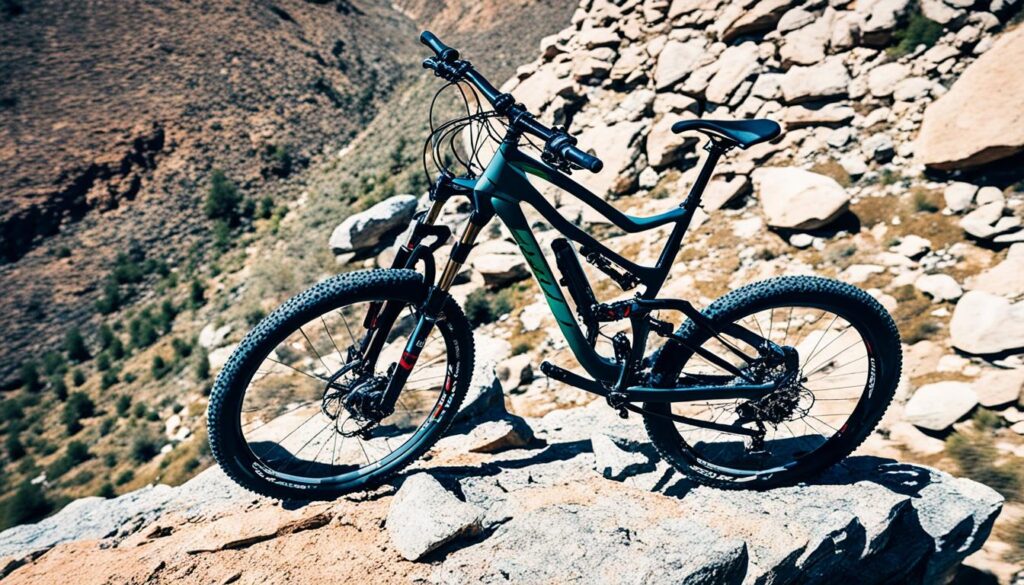
As seen from the market demand, the preference for bikes with or without kickstands varies. While there is a strong demand for kickstands, a significant number of riders also prefer bikes without them. This emphasizes the need for bike manufacturers to offer a diverse range of choices to meet the varying demands of consumers.
Scratches, Tears, and Dents from Leaning Bikes
When it comes to parking our bikes, we often find ourselves in search of a suitable spot to lean them against. However, this practice of leaning bikes on various objects can lead to unwanted consequences such as scratches, tears, and dents over time. Constantly relying on random surfaces can be inconvenient and potentially damaging to our beloved bikes.
Instead, one effective solution to avoid these potential damages is to utilize a kickstand. By using a kickstand, we can safely park our bikes without worrying about them leaning against rough surfaces or unstable objects. Not only does a kickstand provide stability, but it also helps preserve the integrity and appearance of our bikes.
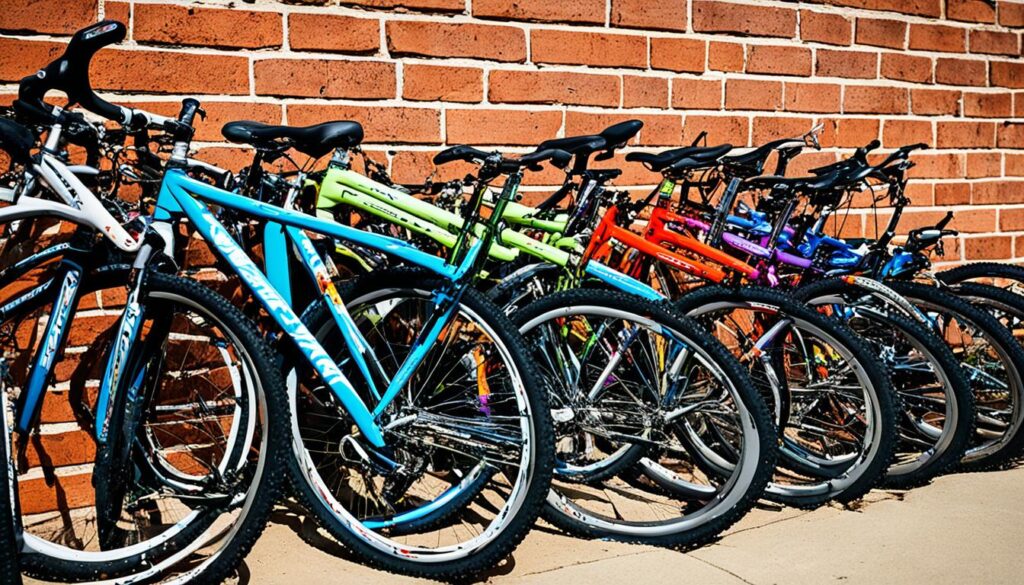
| Types of Damage | Potential Consequences |
|---|---|
| Scratches | Unsightly marks on the frame or components |
| Tears | Damage to the seat or other vulnerable parts |
| Dents | Structural damage that affects the bike’s performance |
Avoiding these damages not only helps maintain the aesthetics of our bikes but also preserves their long-term functionality. Whether it’s a leisurely ride around the neighborhood or an exhilarating mountain biking adventure, having a kickstand ensures that our bikes are properly supported and protected at all times.
Additionally, a kickstand provides a sturdy resting place, eliminating the need to search for a suitable leaning spot every time we need to park our bikes. This convenience can save us valuable time and effort, allowing us to focus on enjoying our rides without worrying about potential damage.
Leaning bikes directly on surfaces can cause permanent scratches, tears, and dents. Using a kickstand is a reliable and convenient alternative that safeguards our bikes from unnecessary harm.
By utilizing a kickstand, we can confidently park our bikes without the fear of scratches, tears, or dents. Embracing this simple yet effective accessory ensures that our bikes remain in optimal condition, ready to take us on many more exciting adventures.
Conclusion
After exploring the reasons why mountain bikes often lack kickstands, it is clear that their absence is a result of various factors. The design of mountain bikes prioritizes off-road performance, which means features like kickstands are impractical and potentially unsafe in rugged terrains. Additionally, the constant push for weight reduction in modern bike design has made traditional kickstands less suitable for these lightweight bikes.
However, it’s important to note that kickstands still have their place in the cycling world. City, cruiser, and touring bikes, which prioritize convenience and utility, often come equipped with kickstands. These types of bikes are commonly used for recreational rides and commuting, where the ability to park and rest the bike easily is valued by riders.
The decision to use a kickstand ultimately comes down to personal preferences and individual cycling needs. Some riders may find a kickstand indispensable, appreciating the convenience and ease it provides when parking their bikes. Others may prefer the sleek aesthetic and lightweight design of a mountain bike without a kickstand, prioritizing performance and maneuverability.
In conclusion, while mountain bikes often lack kickstands, their absence shouldn’t discourage riders from enjoying their cycling experiences. Whether you choose to rely on alternative bike parking solutions or opt for an aftermarket kickstand, the key is to find a balance between functionality, safety, and personal preferences to make the most of your mountain biking adventures.
FAQ
Why have kickstands become less common on bikes?
When were kickstands introduced and why did their popularity decline?
Why do mountain bikes often lack kickstands?
What are the safety concerns and other reasons against using kickstands?
What are some alternatives to kickstands that offer convenience for bike parking and storage?
How can I install an aftermarket kickstand?
Why do some riders still prefer to have a kickstand?
What are the potential damages from leaning bikes on various objects?
Are kickstands necessary for mountain bikes?
Olivia’s writing is not only informative but also inspiring. She has a knack for telling stories that capture the essence of cycling and the joy it brings to people’s lives. Her writing has been praised by readers and industry experts alike for its clarity, depth, and authenticity.
In addition to her writing, Olivia is also an avid cyclist. She enjoys exploring new trails and routes and has participated in several cycling events and races. Her first-hand experience with cycling gives her a unique perspective on the sport, reflected in her writing.
Overall, Olivia is a talented writer passionate about cycling and dedicated to producing high-quality content for FlatironBike. Her contributions to the magazine have helped make it a go-to source for cycling enthusiasts worldwide.
-

 Vetted5 months ago
Vetted5 months ago12 Best Men's Cycling Bib Shorts for Comfort and Performance – Reviewed & Rated
-

 Electric Bike3 weeks ago
Electric Bike3 weeks agoHow To Turn Your Bike Into An Electric Generator
-

 Vetted4 months ago
Vetted4 months ago15 Best Fixed Gear Bikes for Urban Commuting and Stylish Riding
-
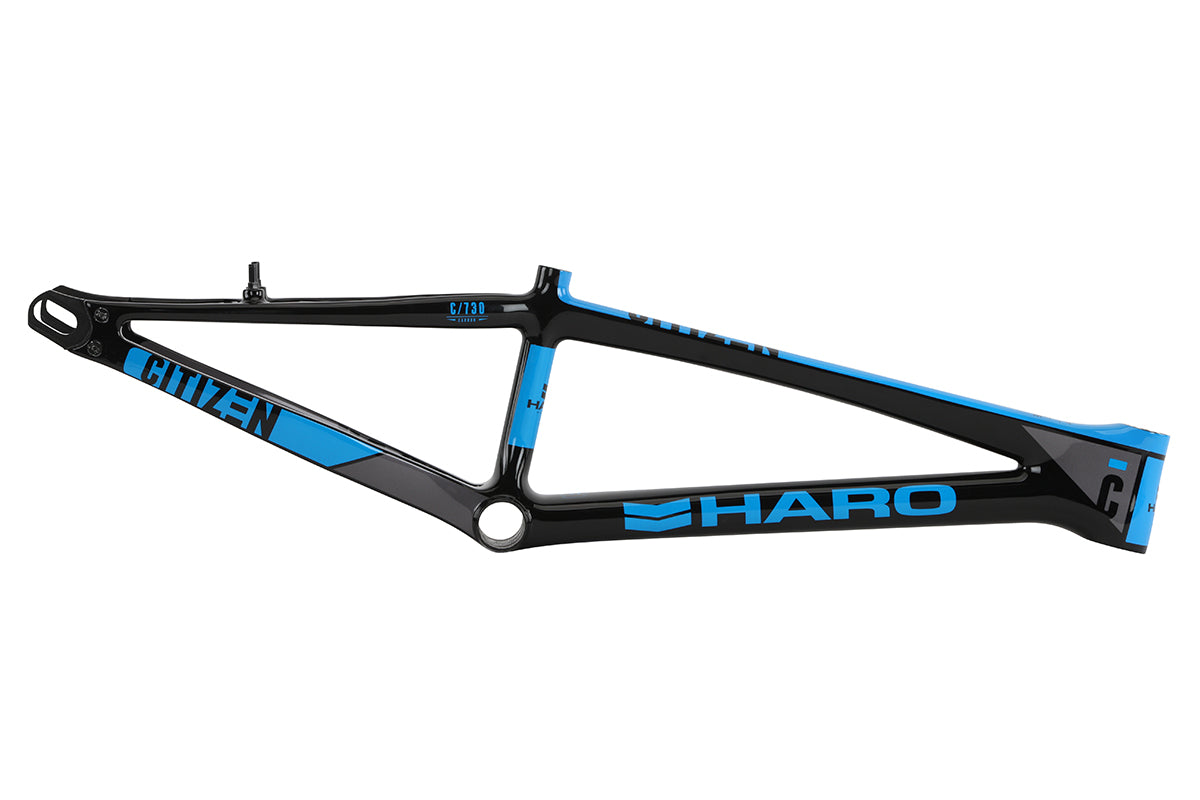
 Bike4 months ago
Bike4 months agoAdvantages and Disadvantages of a Carbon Fiber Bike Frame
-

 Vetted5 months ago
Vetted5 months ago15 Best Cycling Jerseys for Men to Elevate Your Riding Game
-

 Vetted5 months ago
Vetted5 months ago15 Best Cycling Gloves for Comfort and Performance – Ultimate Guide for Cyclists
-
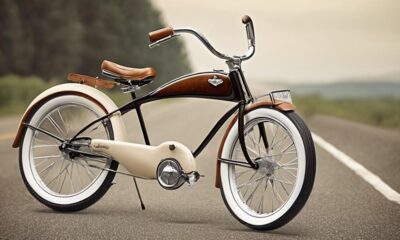
 Vetted4 months ago
Vetted4 months ago15 Best Cruiser Bikes to Hit the Road in Style
-

 Vetted4 months ago
Vetted4 months ago15 Best Comfort Bikes for a Smooth and Enjoyable Ride









